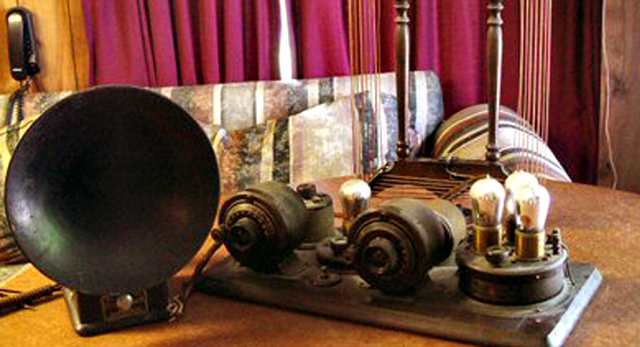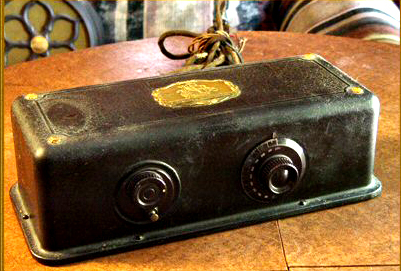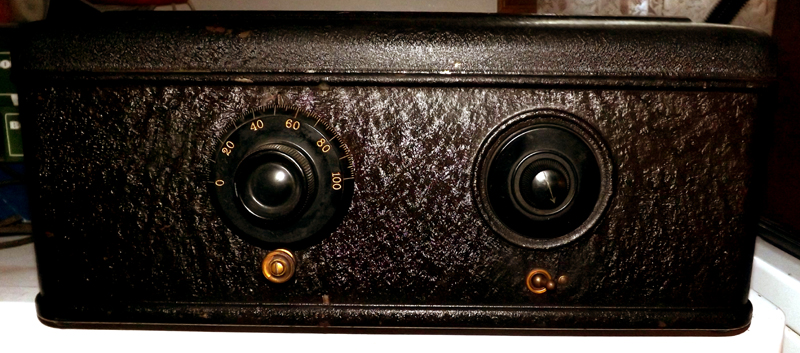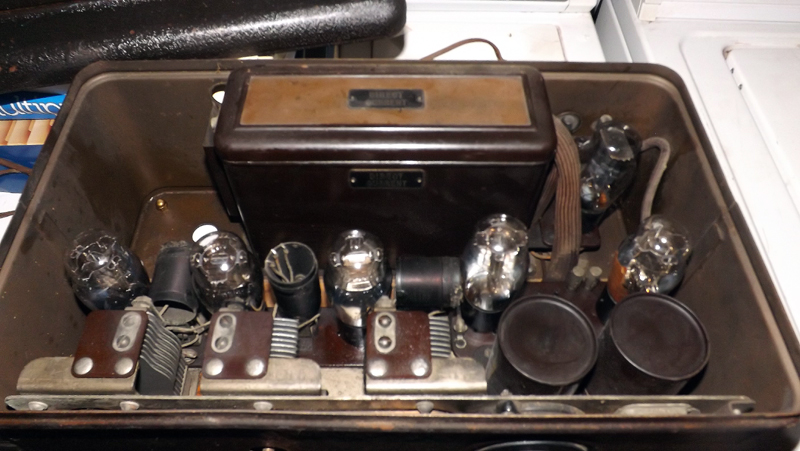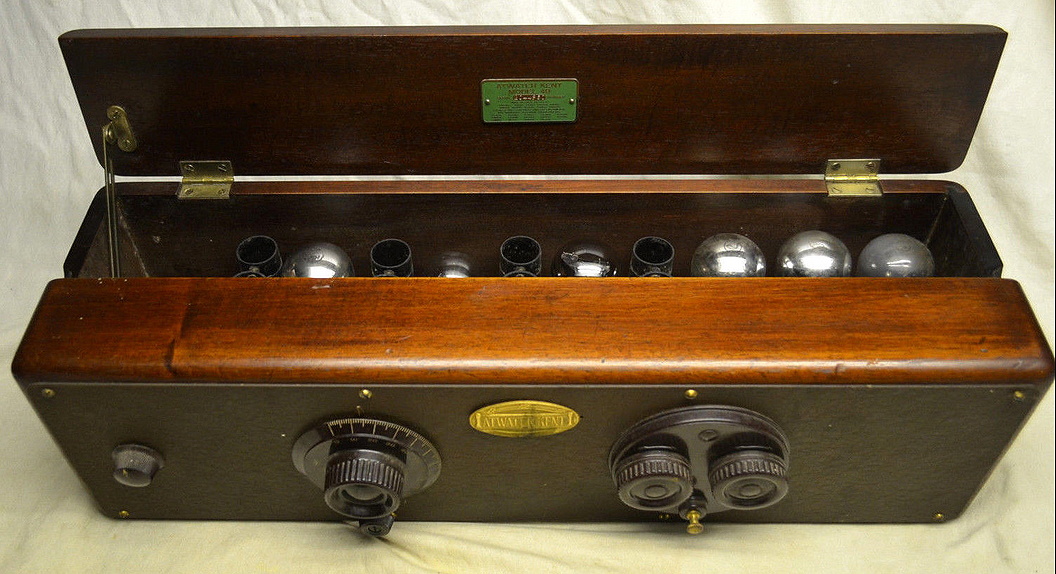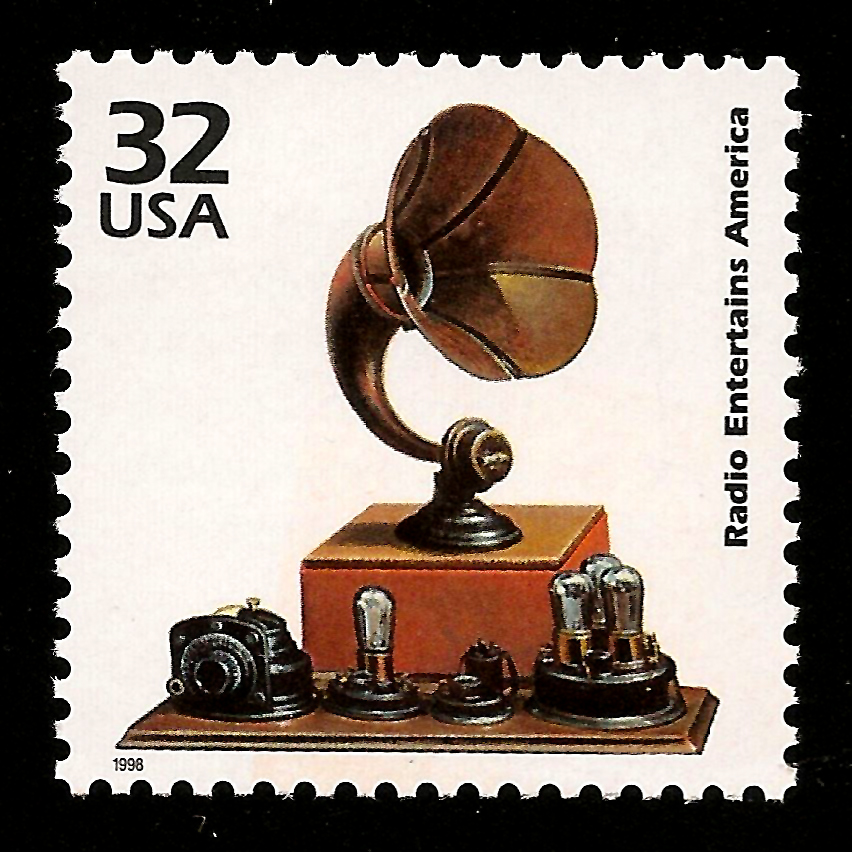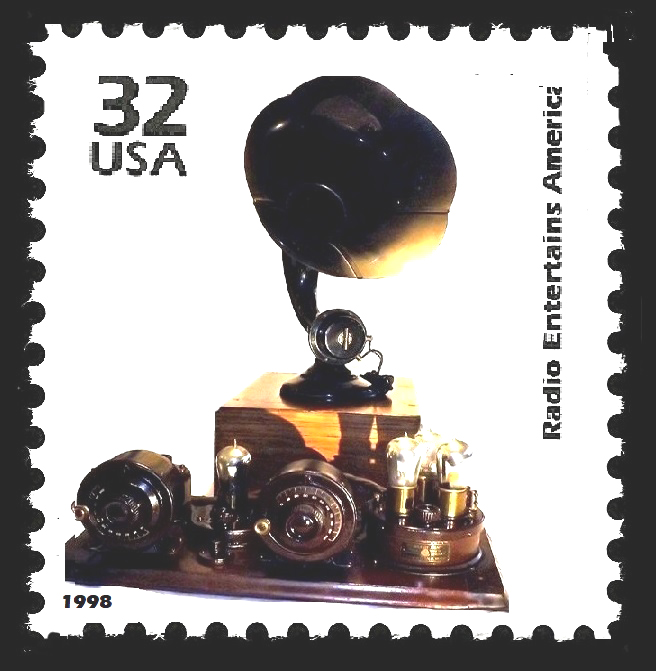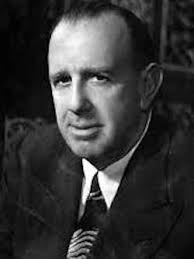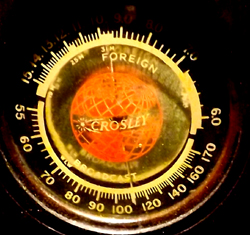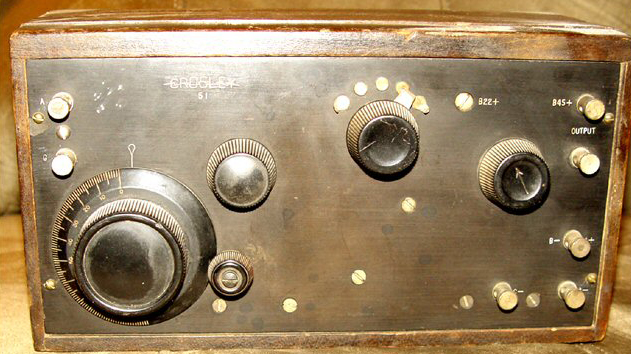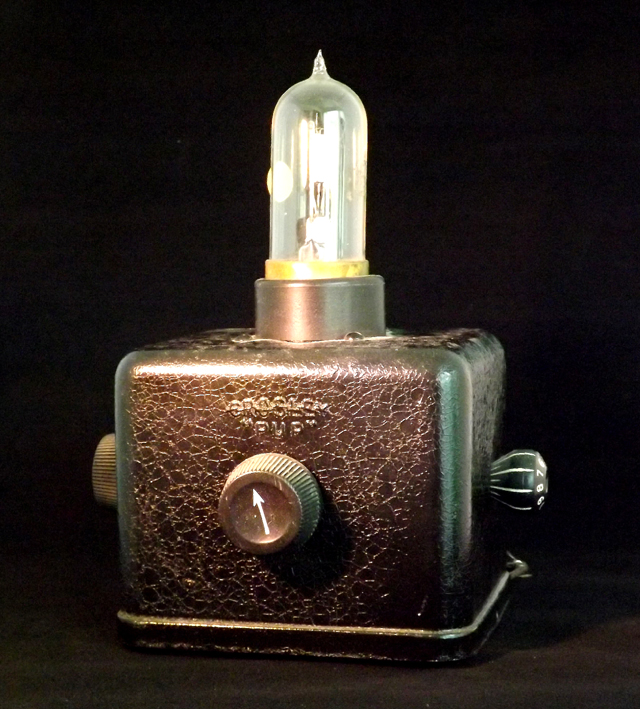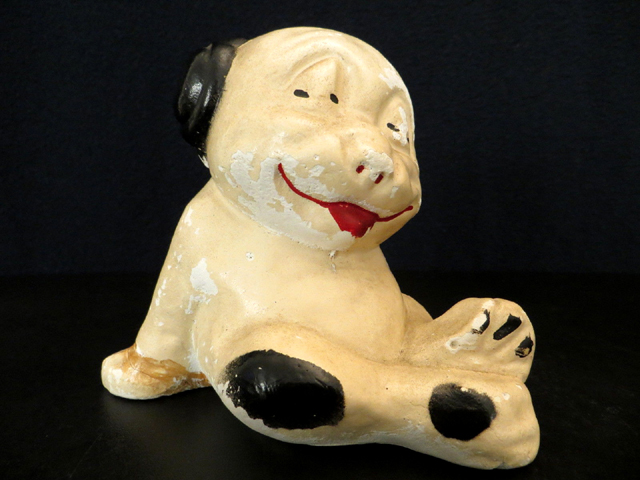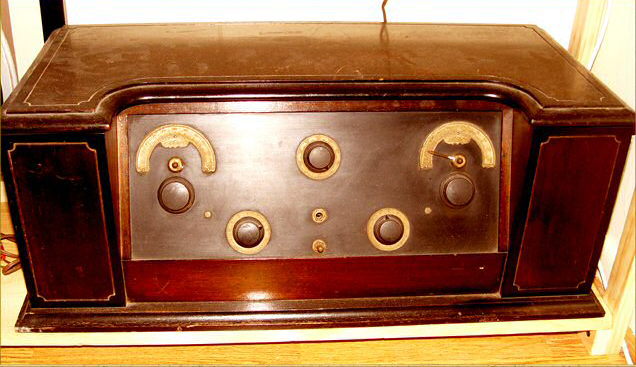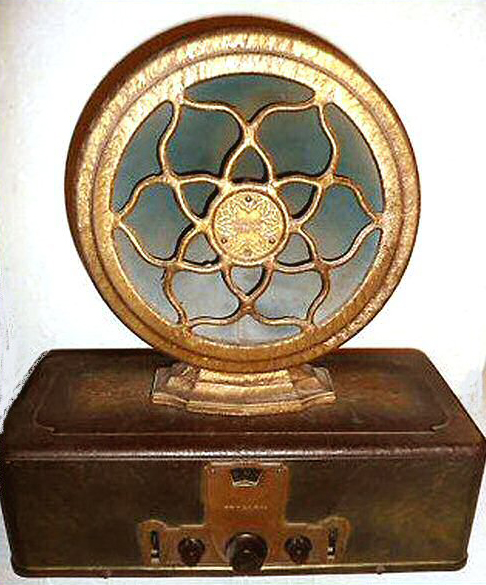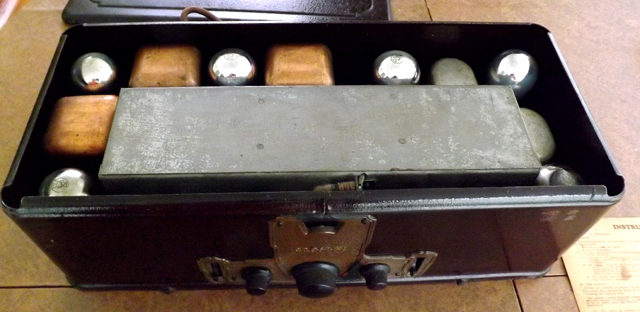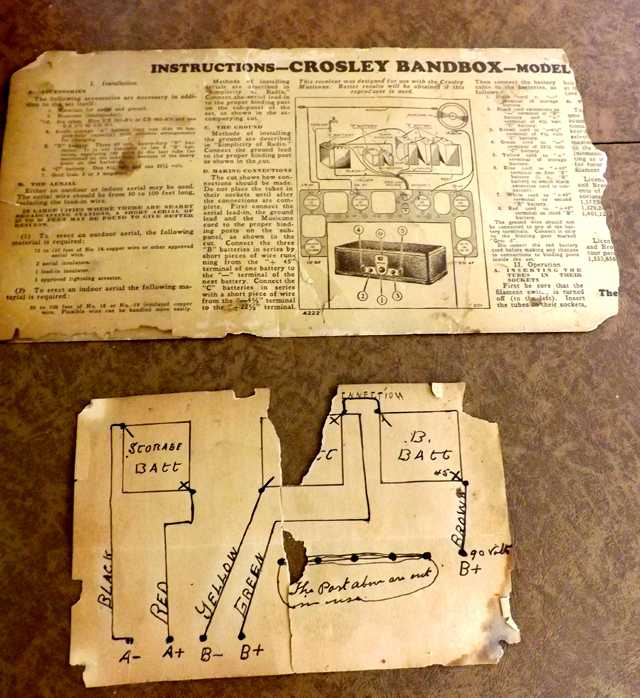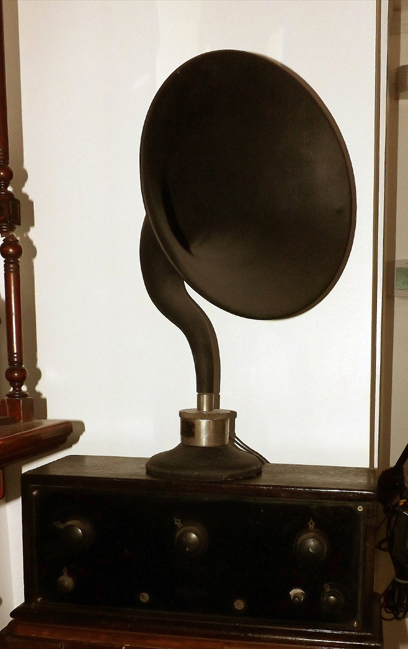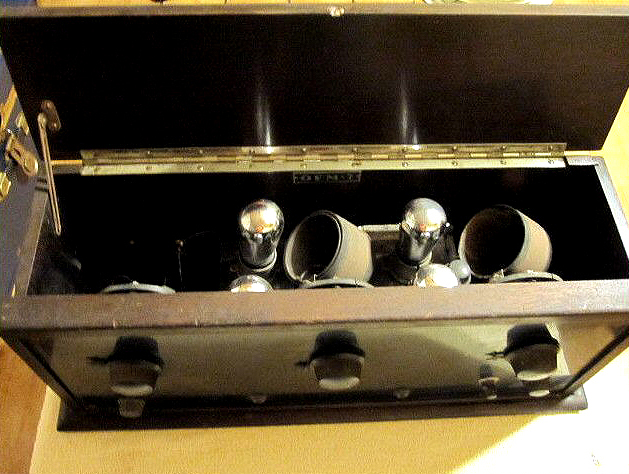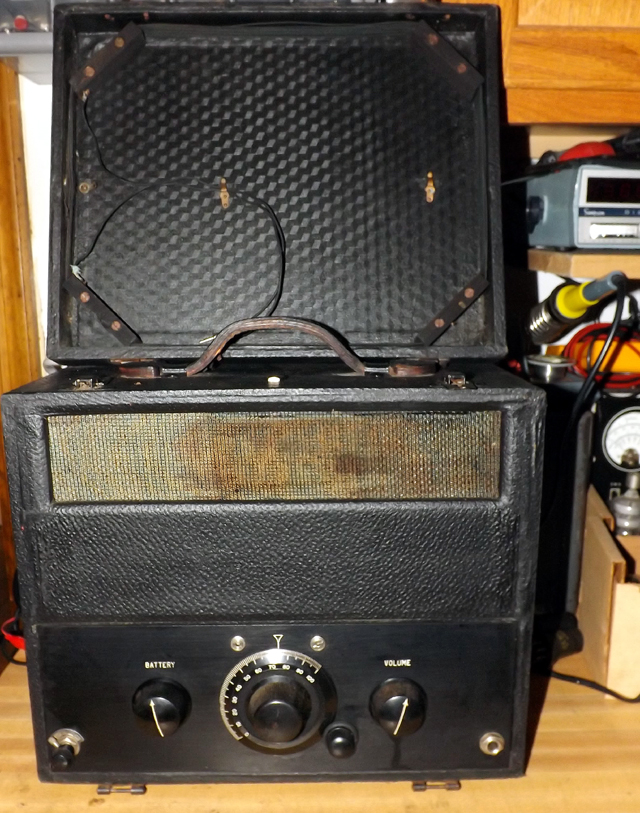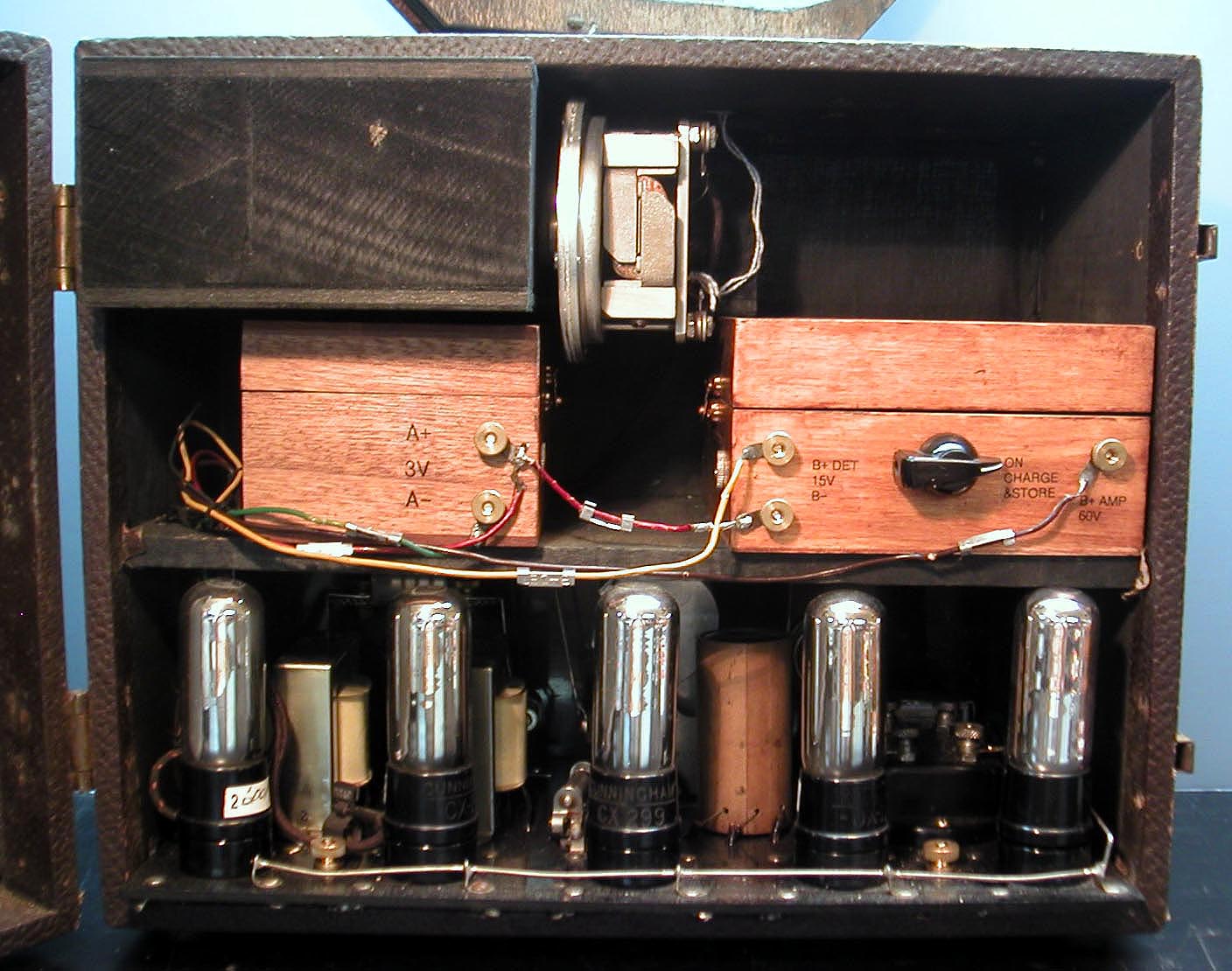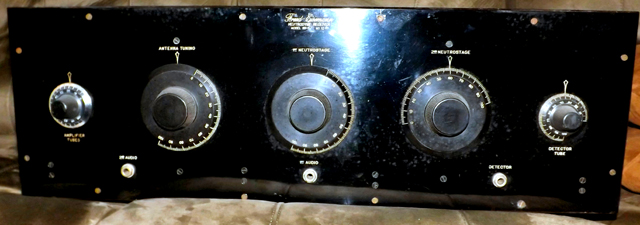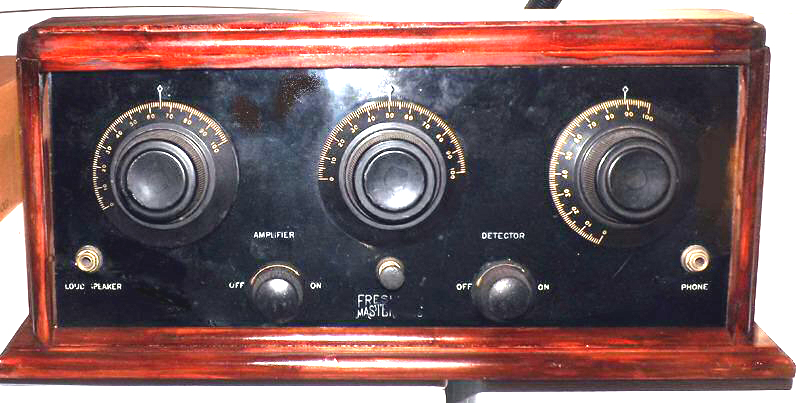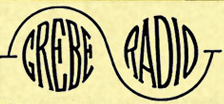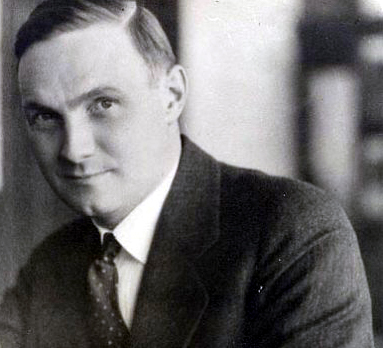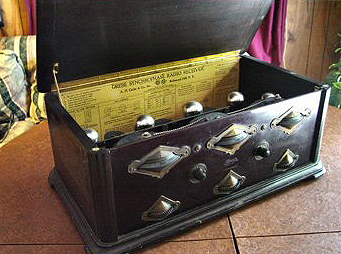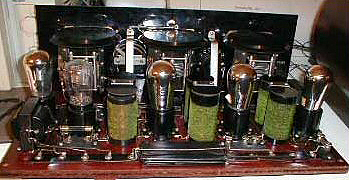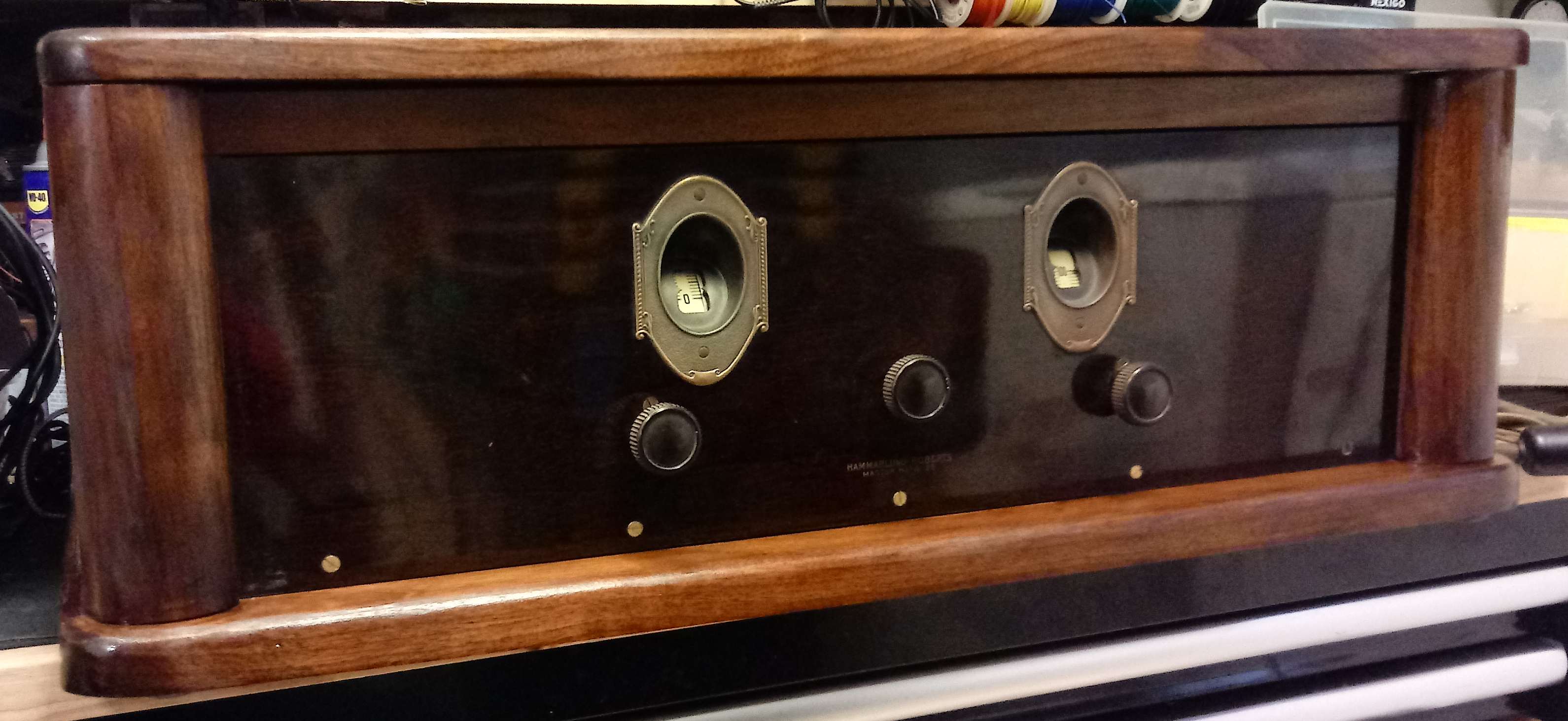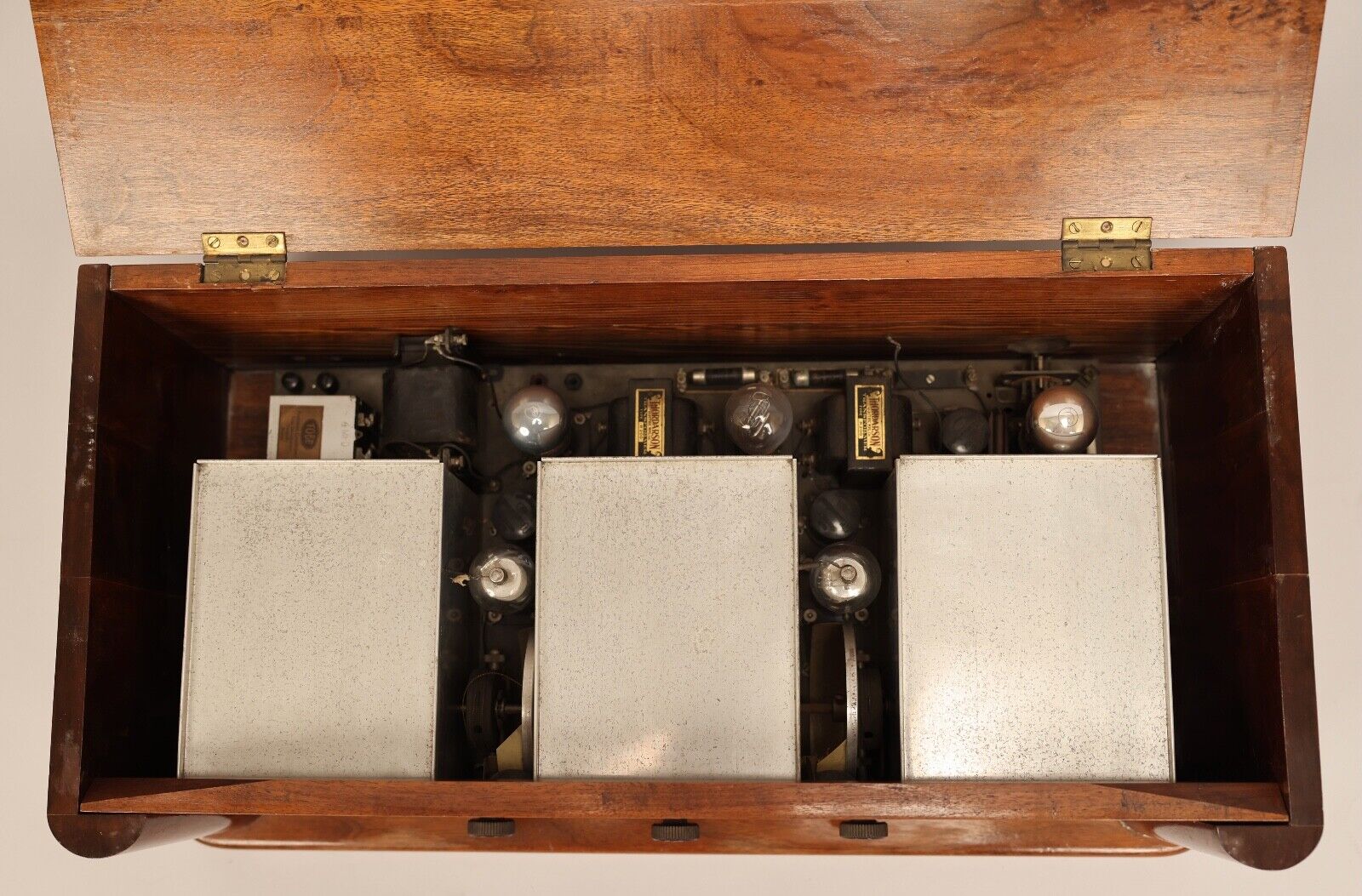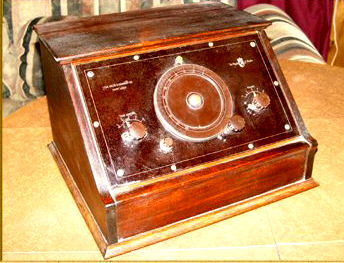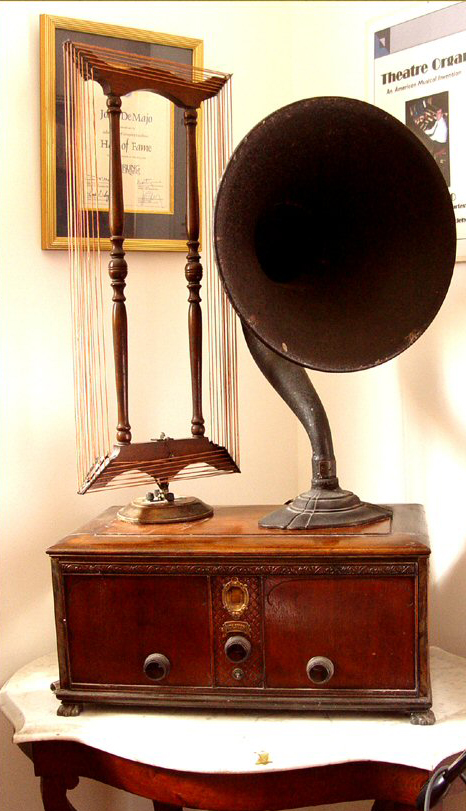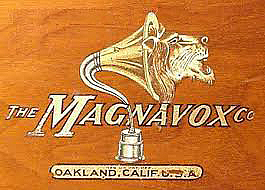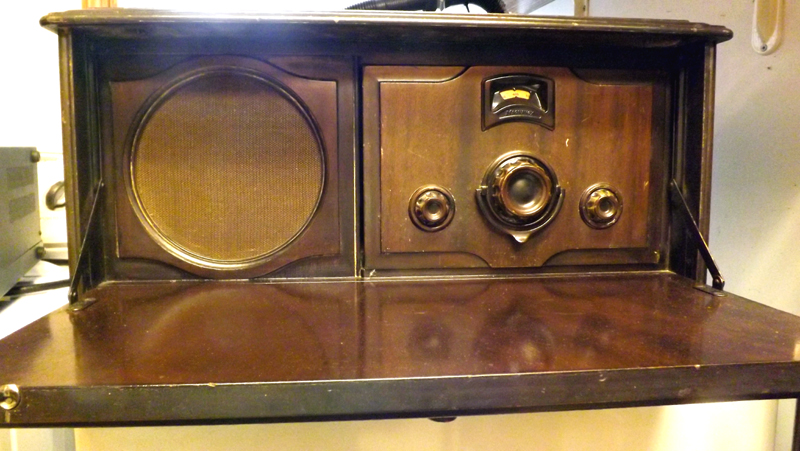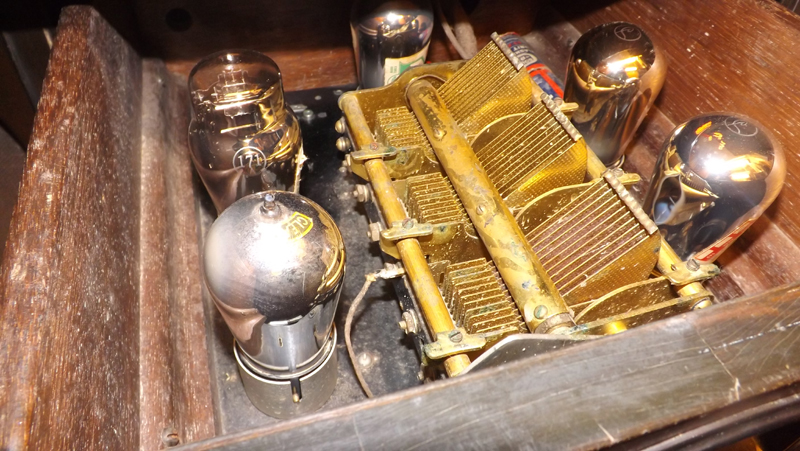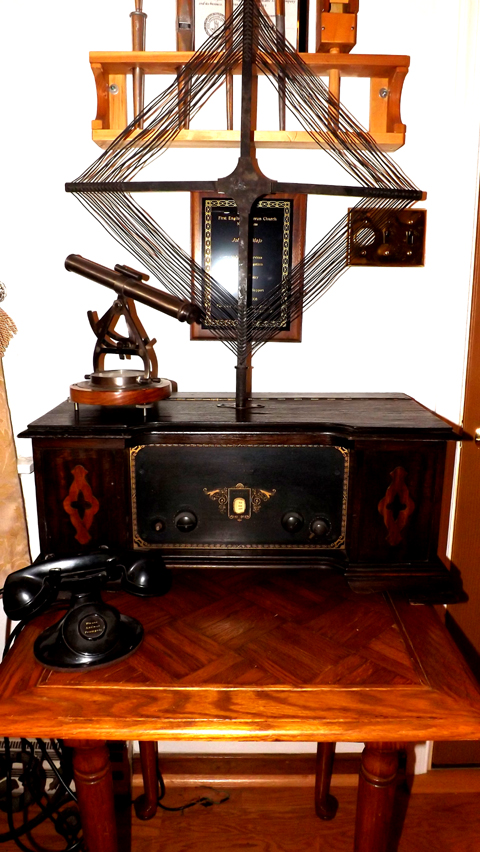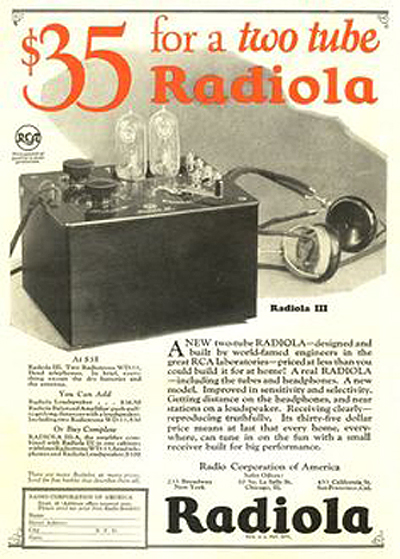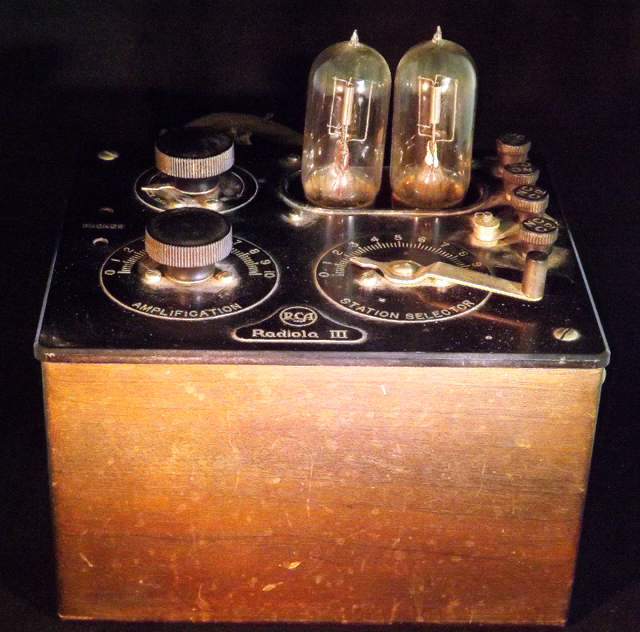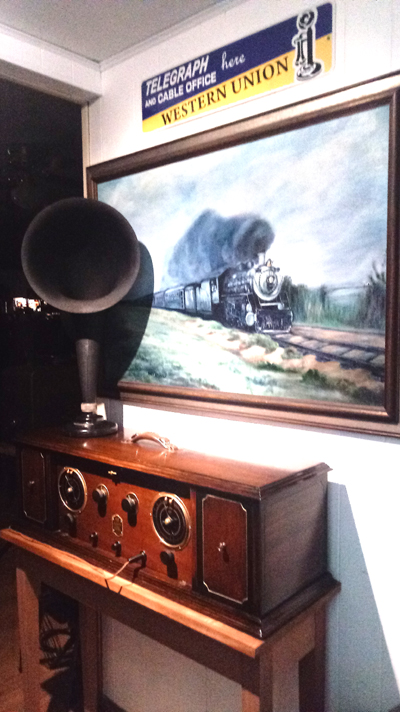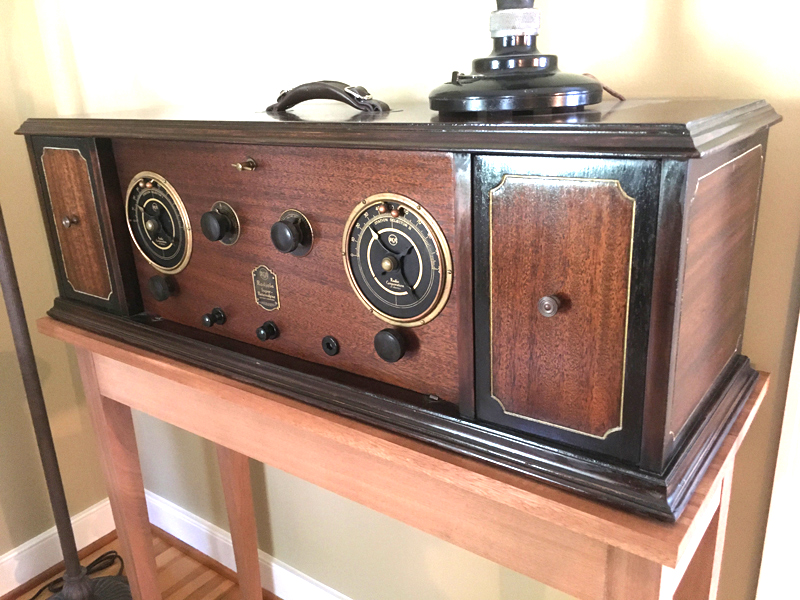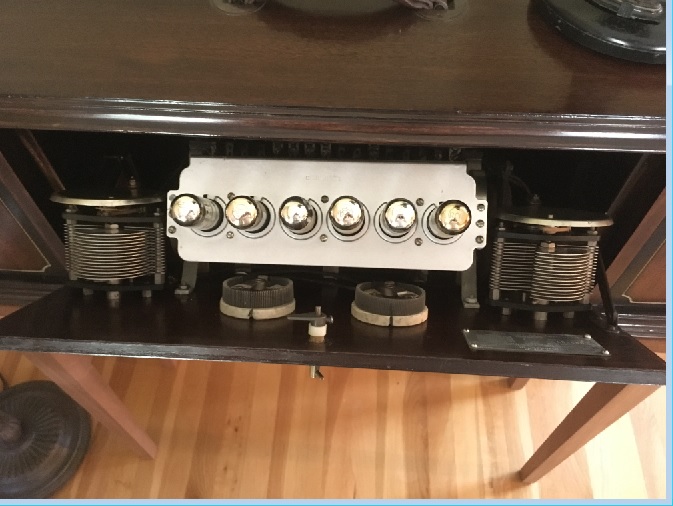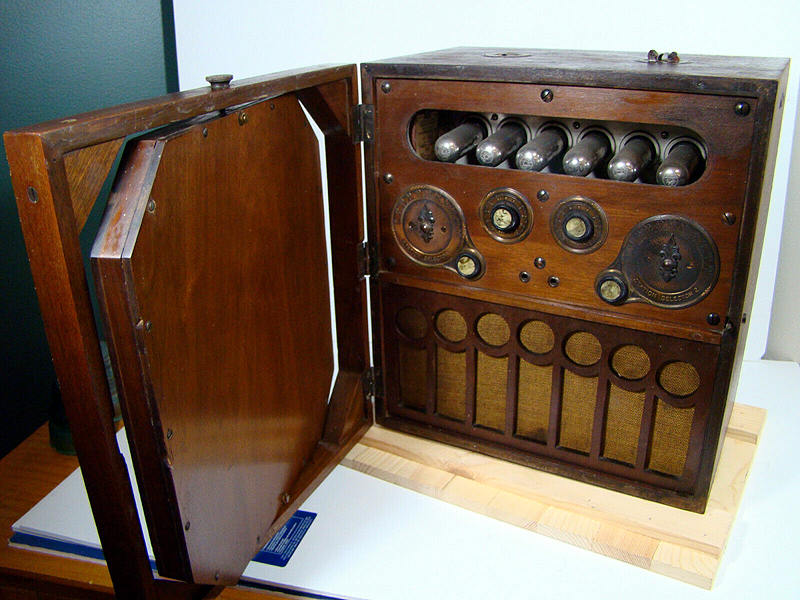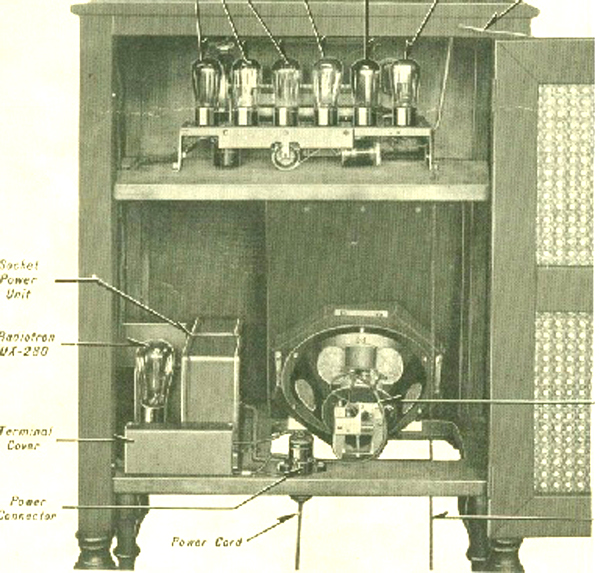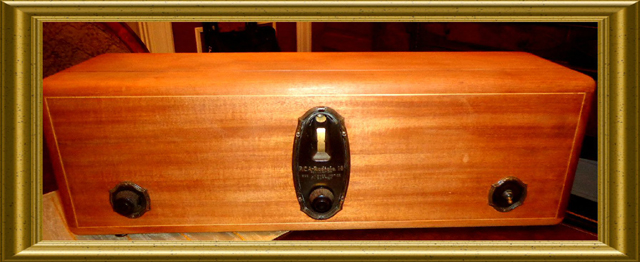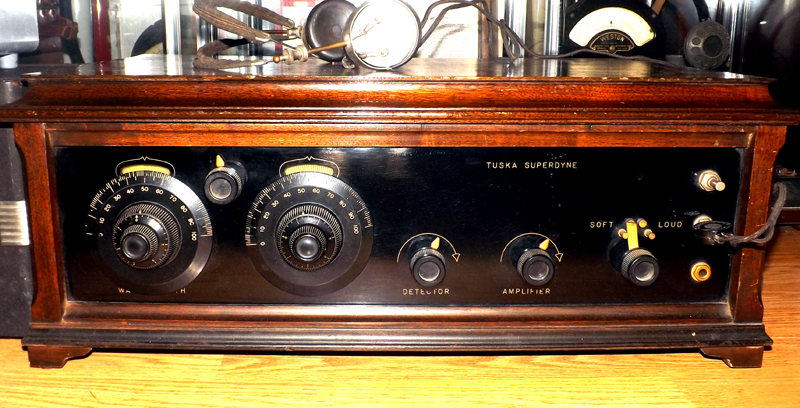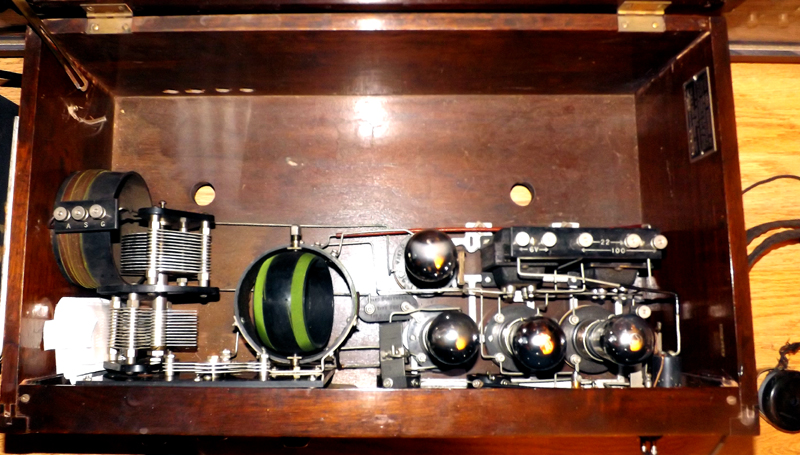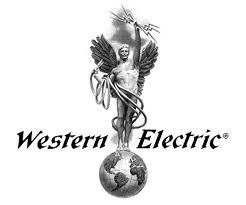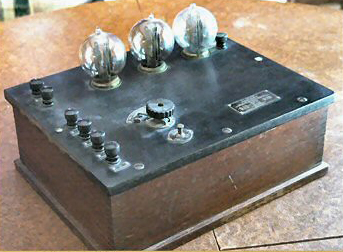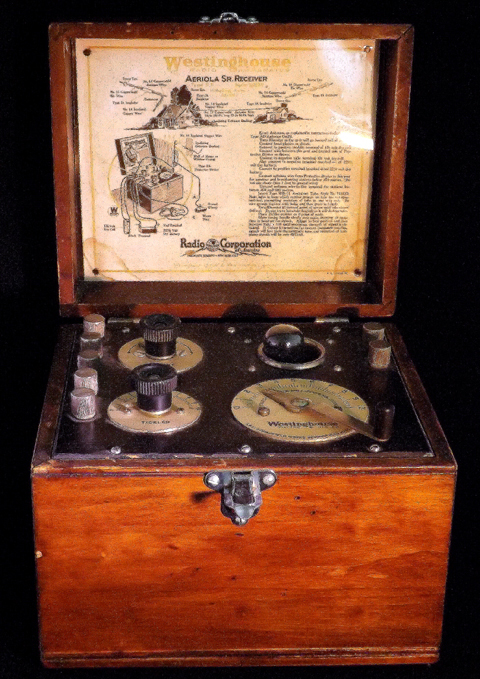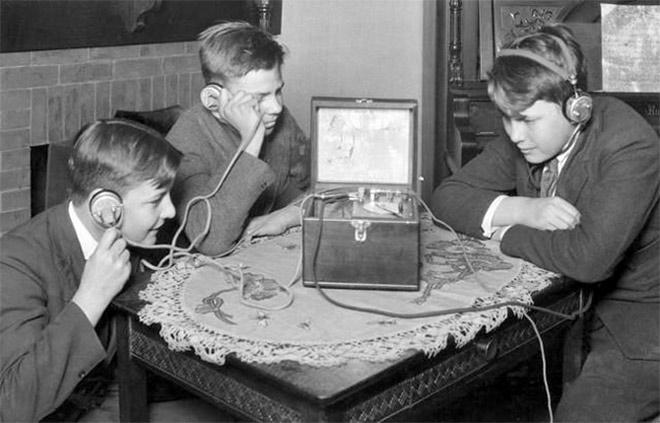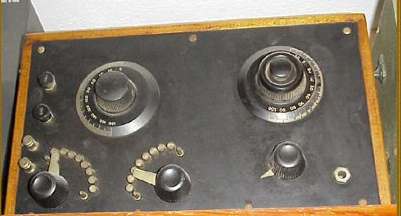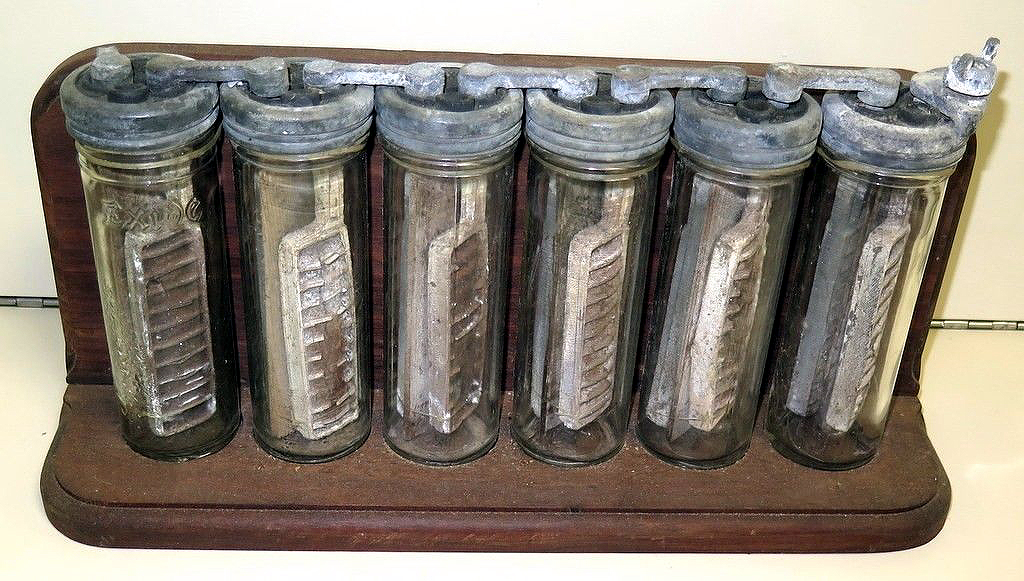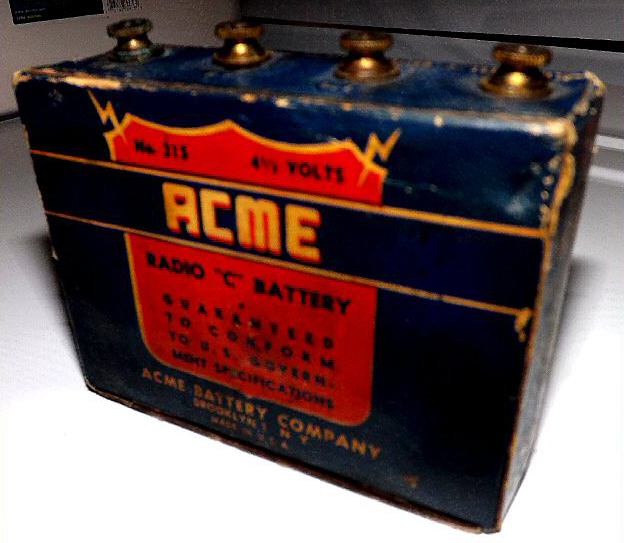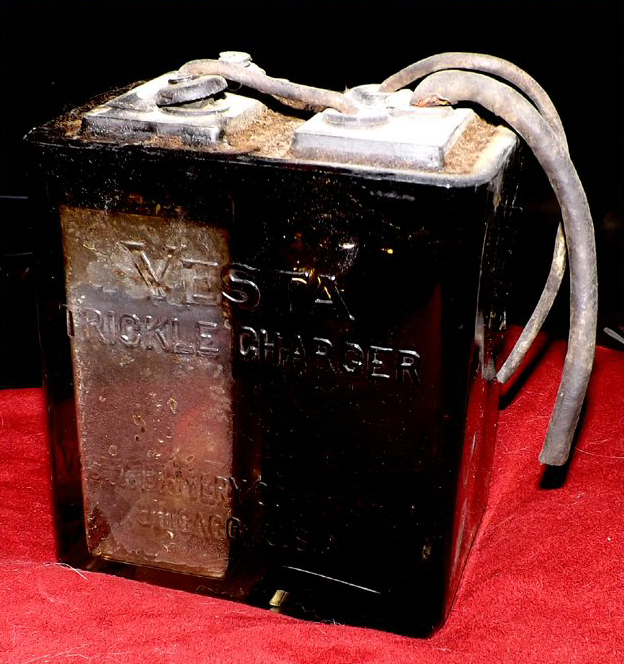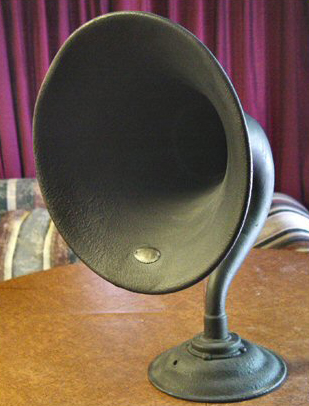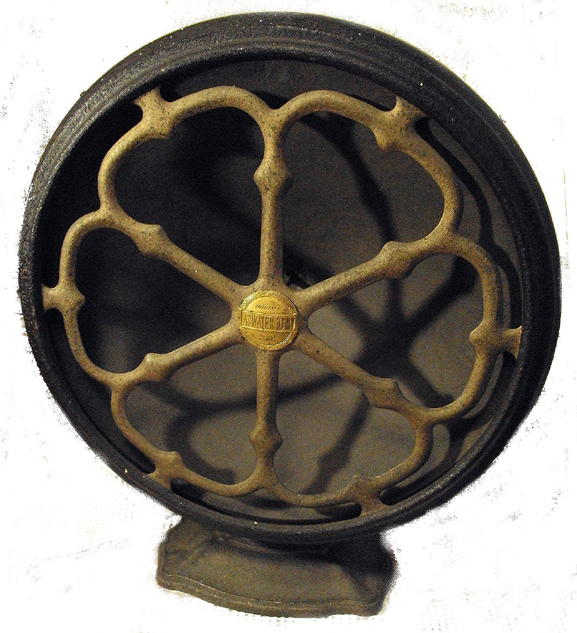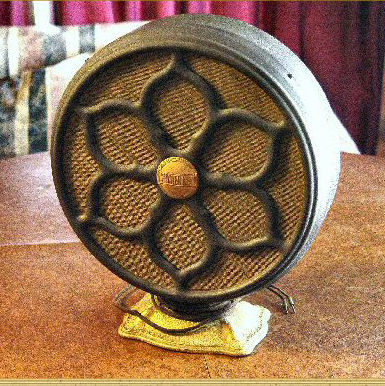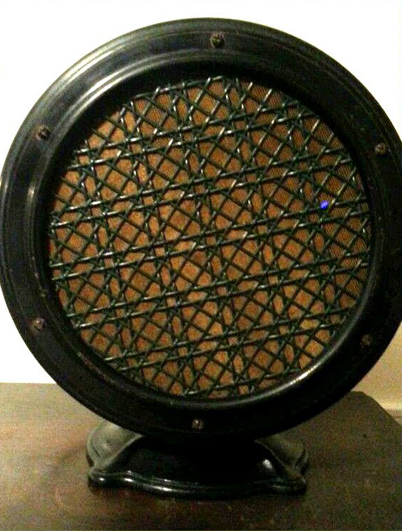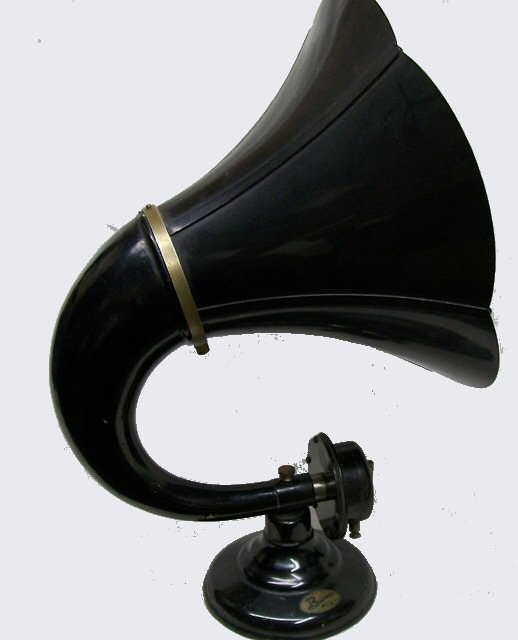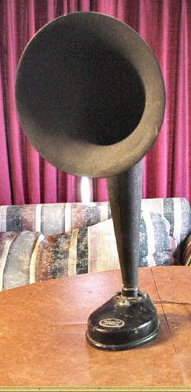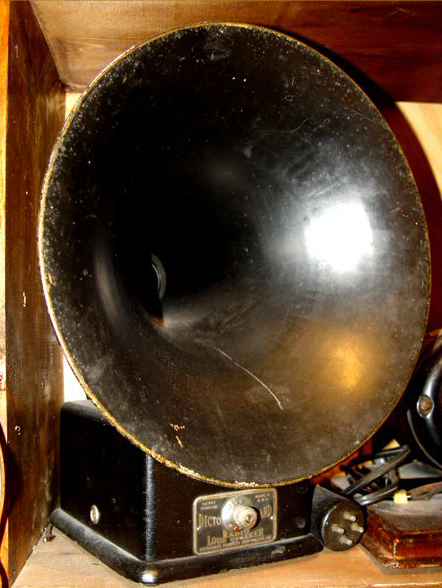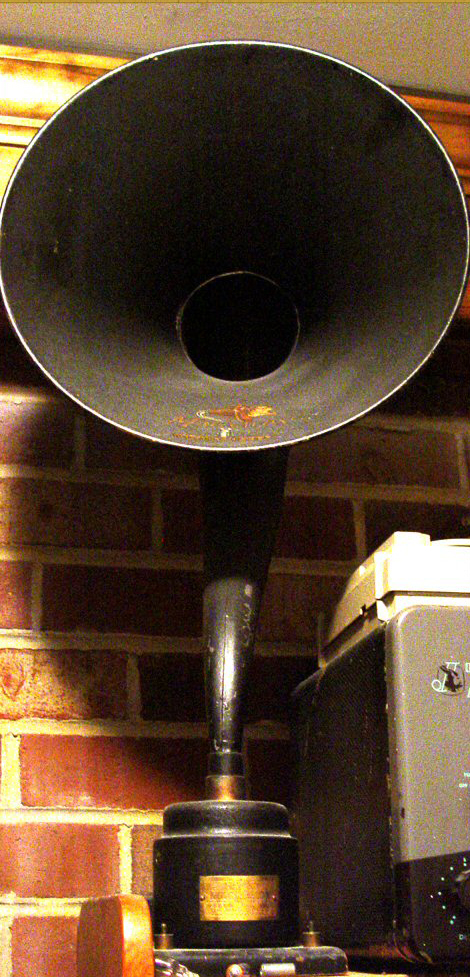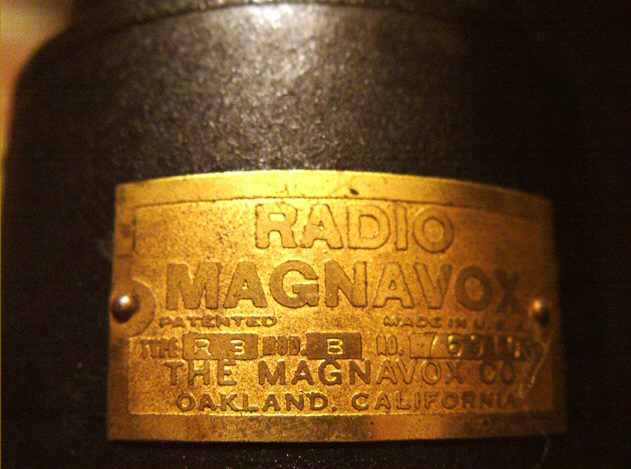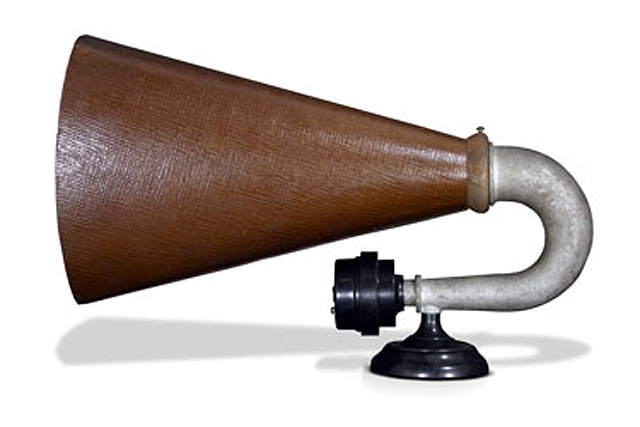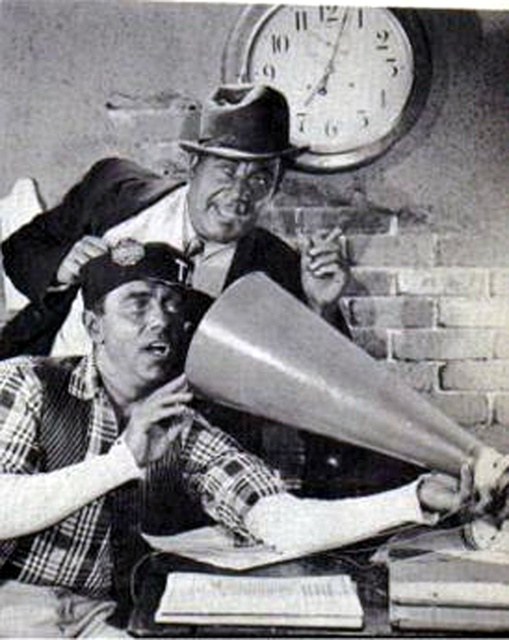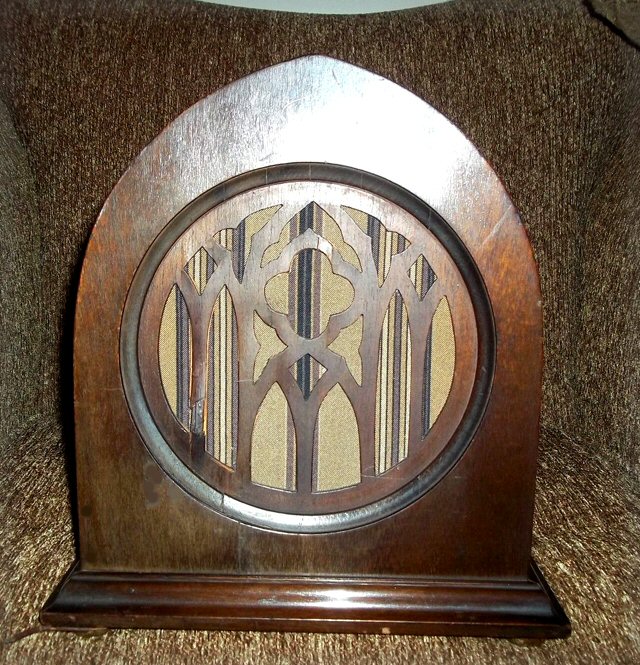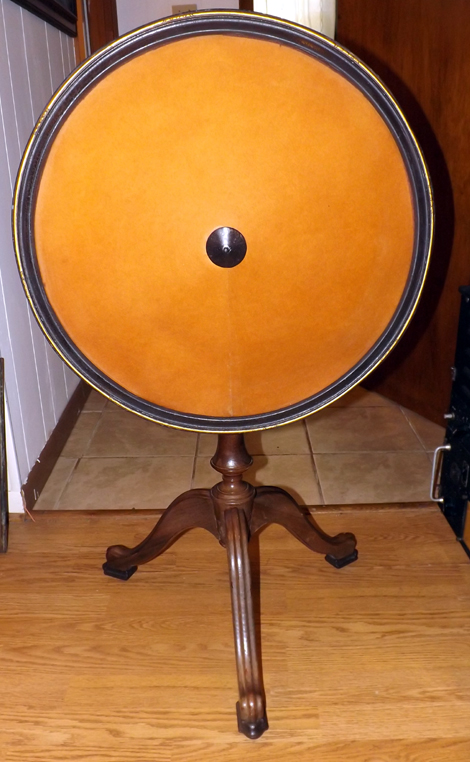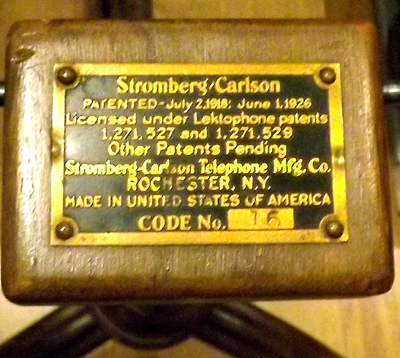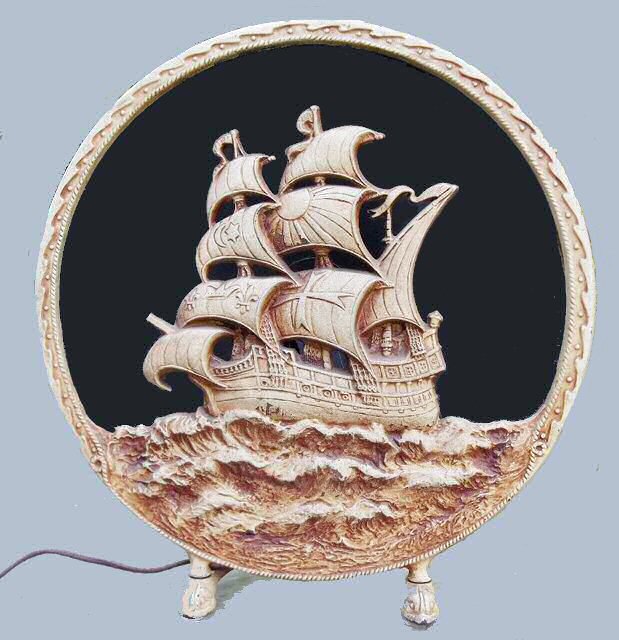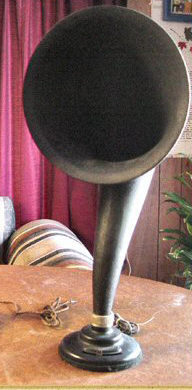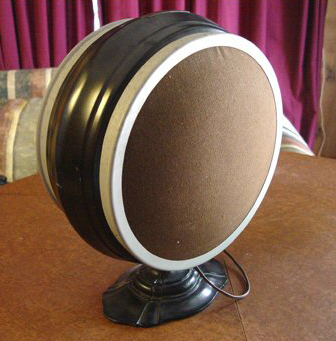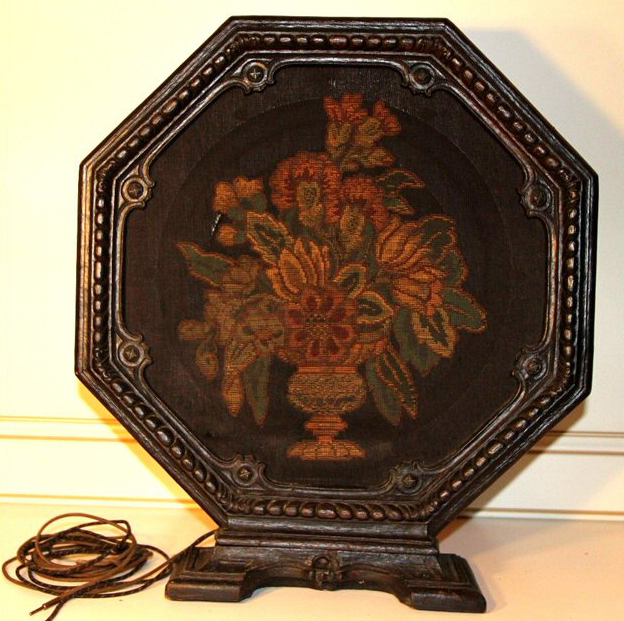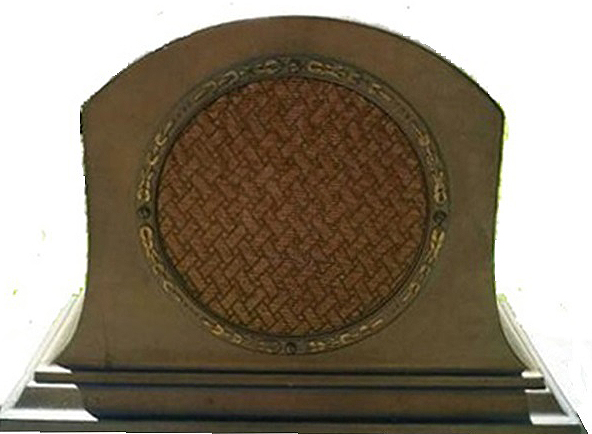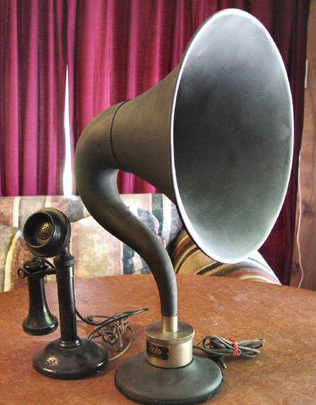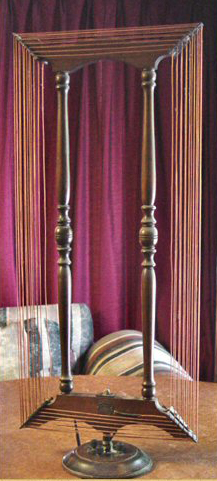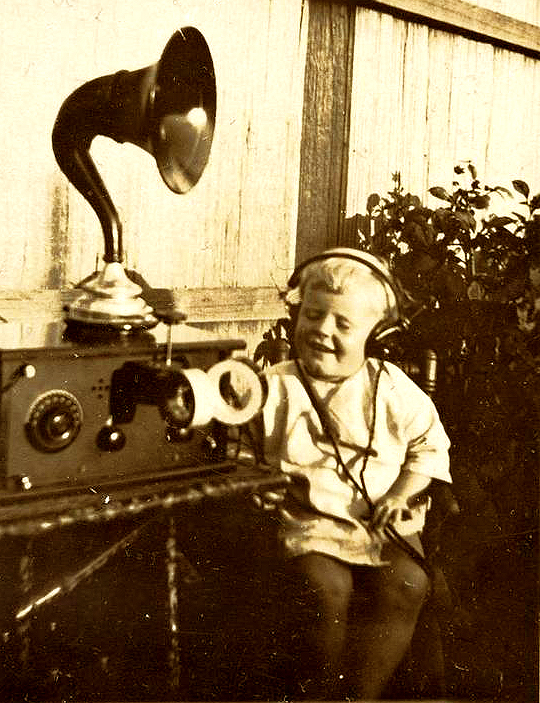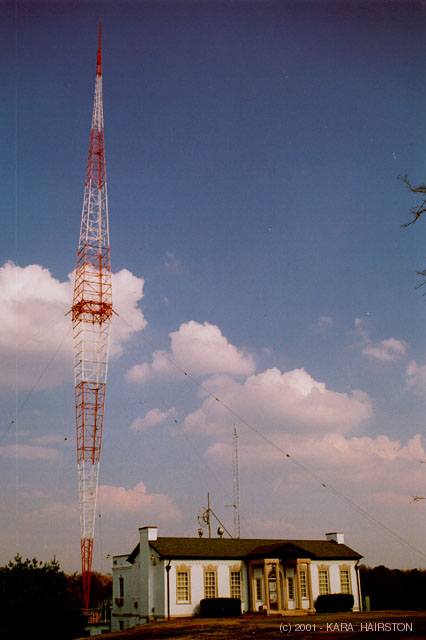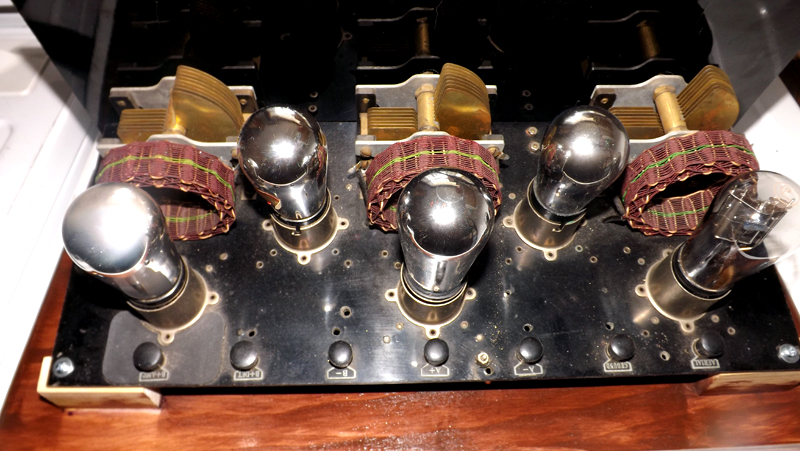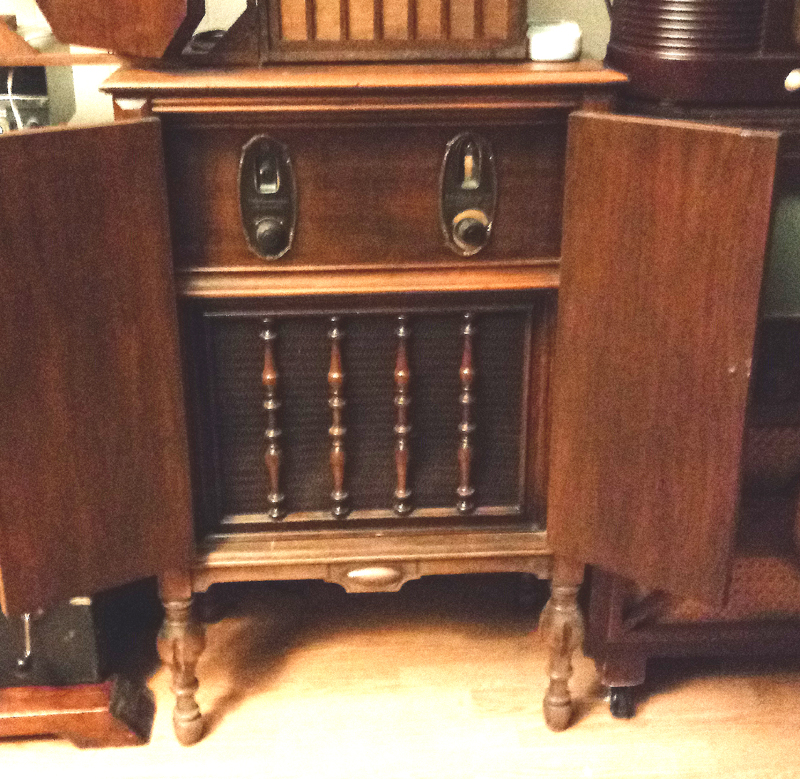|
|
.
|
|
|
 THE SPARK ERA 
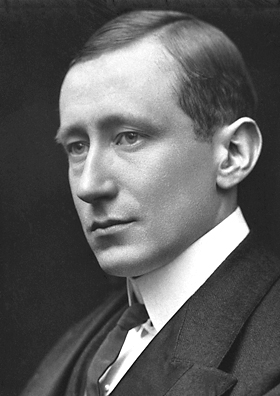 |
With the advent of inventor and physicist Guglielmo Marconi's successful wireless transmission of signals between distant points, the Marconi Wireless Telegraph Company established itself in the worlds of business and shipping. The company saw little activity in the very early years following Marconi's famous experiments. It wasn't until it became known that communications via Marconi's wireless systems, were directly responsible for rescue help reaching the sinking steam ship Titanic after it struck an iceberg and sank on its maiden voyage, that the company's future was secured.
Interestingly, Marconi never envisioned his "wireless" as an entertainment medium or a household fixture to bring news, music and structured programs into the home. His early vision was that the device would be used as a method of additional safety for shipping interests. It was actually a sixteen-year-old Marconi employee, a Russian immigrant named David Sarnoff, who realized the implications of Marconi's invention with regard to Radio as we know it.
|
|
|
STOCK CERTIFICATE OF THE MARCONI WIRELESS TELEGRAPH COMPANY OF AMERICA
|
| |
|
The sinking of the RMS Titanic in 1912, provided an opportunity for the world to see the value of the Marconi Wireless Telegraph as a safety device for ship-to-shore communications. It was via the ship's radio telegraph station that the first distress signals were sent on that fateful night. Although other ships were hours away, having radio contact is credited with the eventual rescue of a portion of the Titanic's passengers. |
|
|
David Sarnoff, in his position as a station operator at the Marconi Wireless Telegraph Company's east coast ship-to-shore receiving station, as he would have appeared on the night of the steam ship Titanic disaster. Sarnoff is the operator credited with receiving the reports from the Marconi radio system aboard the Titanic, and relaying the information to vessels which were in a position to assist with the later rescue of survivors.
After that event, Sarnoff went on to become chairman of the Radio Corporation Of America, where he was able to deploy his ideas regarding radio as a medium of news and entertainment in the American home and workplace. In his role as RCA chairman, Sarnoff pioneered consumer radio manufacturing, and oversaw the operation of the National Broadcasting Company. |
|
| |
|
The American Wireless Associateion Museum's well done re-creation of the radio room from a Titanic era ship. Note that all of the equipment is from the early "spark" era, and no vacuum tubes exist in any apparatus used in that early Marconi period. |
| |
|
In the early days of spark generated RF signals, large statons, such as the Marconi "Ship-to-Shore" stations, used huge high frequency AC generators to produce signals within a narrower frequency range than could be achieved with an untuned high voltage spark transformer. Alexanderson Alternators, of some size, were the standard in many of the early commercial CW installations. Shown here is a bank of alternators in a large transmitting plant of the early 1900s. |
| |
| |
DEVICES FROM THE EARLY DAYS OF RADIO'S DEVELOPMENT |
 |
Before the discovery of the Vacuum Tube, radio transmission was limited to tuned spark signals emanating from spark gaps utilizing thousands of volts of electricity. These signals were difficult to tune to a small frequency bandwidth, so spark stations often interfered with other stations. On the receiving end, detection of these signals was limited to the use of elements such as Galena crystals, which had the effect of rectifying electro-magnetic waves coming through the air so that they could be heard on an earphone.
Even after the vacuum tube came into use, and modulated (voice and music) radio was perfected, many could not afford the expensive receivers of the day, so use of crystal based radio sets carried forth well into the late 1920s and beyond. Many who grew up in that era, tell stories of building their own crystal sets using wire wrapped on cylindrical oat meal boxes such as the familiar Quaker Oats containers. It was not until Major Edwin Armstrong perfected the superhetrodyne receiver circuit, that single tuning control, tube radios became popular, and crystal sets became more in the way of science projects for technically astute youths, than as practical radios for the home. This page salutes the lowly crystal set in its various forms of sophistication.
|
|
| |
|
The device above is an early experimenter's spark gap transmitter, typical of what would have been used by amateur radio operators in the very early 1900s. Transmitters of this type could only produce bursts of radio frequency waves that covered a wide spectrum, and were limited to un modulated CW or code. It was not until the vacuum tube became available, that electronic oscillator circuits and audio modulation became possible. |
| |
|
This view of an early 1900s ham radio "shack" illustrates how equipment was built using somewhat crude home made implements and readily available electrical components of the day. Many present day amateur radio enthusiasts still pride themselves on being able to construct the equipment that they use in their hobby. |
| |
|
Above: Demonstration example of an early 250 watt tuned spark transmitter and crystal receiver. The transmitter employs a stationary spark gap and Helix type tuning coil. The crystal receiver, with loose coupler inductor, cat's whisker detector, and DeForest glass enclosed tuning capacitors, is mounted above the operator's desk. The loose coupler inductor bears the name "Signal Radio Company" and was originally sold through the William Duck Company. The high voltage transmitting capacitors are Leyden Jar type. This type of equipment would have been typical of amateur and small commercial radio installations in the early 1900s "pre-vacuum tube" era. |
|
A closeup view of the receiver section. |
| |
|
A typical rotary spark gap that was used in an early pre-vacuum tube era radio station. |
| |
|
A large high voltage spark transformer intended for use in an early spark era transmitter |
| |
|
A variable inductor used in conjunction with the Alexanderson alternator of a high voltage spark transmitter. |
| |
|
In the early days of radio, parts were often repurposed house wiring devices. Those things specific to the radio trade were often hard to find. Much of the equipment that was used in early amateur and experimental installations was sold through the J. J. Duck and William Duck Company. Pictured above is J.J. Duck Catalog #6 dating to 1912. |
|
In addition to mail order houses, radio sales departments began to show up in department stores. One major department store of that era, Sears Roebuck & Company, had their own radio station WLS which stood for World's Largest Store, and John Wanamaker also operated a radio station at one time from his Philadelphia store. |
| |
| |
CRYSTAL RECEIVERS |
|
An early 1900s magazine ad for a crystal type radio receiver |
| |
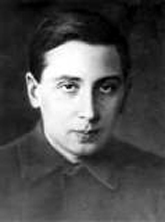 |
The crystal set was first invented by Oleg Losev, (1903-1942), a Russian scientist and inventor in the field of semi-conductors. His work eventually led to the development of the transistor and eventually to light emitting diodes. Without having completed his formal education, and without the benefit of collaboration, Losev managed to become one of the foremost physicists in the development of solid state electronics.
Aside from the crystal set, his work was mostly overlooked until the 1940s when research in semi-conductors was again awakened by World War II.
|
|
| |
|
Federal Junior Crystal Set from 1917
Experimental radio device manufactured by the Federal Radio and Telephone Co., Buffalo, NY
Below is the manufacturer's label showing patent dates. |
|
| |
|
An open Paragon variometer or coupler manufactured by Adams-Morgan Company of Montclair, N. J. The item dates to the early 1900s and was typical of the rotary variable couplers used in TRF receivers of the period from about 1913 to 1923. |
| |
|
1915 Howe Crystal Set
|
Like the Federal Jr. crystal set above, this Howe Radio Receiver is also a relic of the early days of Radio. It has been in the museum owner's family since the early 1920s when his father purchased it from the Maison Blanche Department Store which at the time was located on Canal Street in New Orleans. (See our page on early New Orleans Broadcasting for more info regarding Maison Blanche and its ownership of the WSMB radio station.)
Maison Blanche began to sell early radio apparatus in the 1920s when the store partnered with the Saenger Brothers, owners of a chain of motion picture theatres in the South, to establish WSMB, one of the first radio stations in the United States. WSMB (call letters stand for Saenger-Maison Blanche). WSMB along with WWL, which was born as an experiment in the physics lab at Loyola University Of The South in New Orleans, were pioneer broadcasters in the era when commercial radio broadcasting was just emerging following Dr. Frank Conrad's introduction of broadcasting at the Westinghouse KDKA radio station in Pittsburgh.
|
| |
|
Although it is a later form of crystal radio, this early portable, made by the
Pakette Electric Corp. of Kearney, NE., was one of the first post WW-II crystal sets to employ fixed crystal diode detection instead of the "cat whisker" used in earlier crystal sets. The device also contained a built-in 600 ohm headphone for listening.
|
| |
|
1924 Crystal set manufactured by Steinite Laboratories in Atchison, Kansas |
| |
|
Another Marconi Era Crystal Set by Pandora Electric |
| |
|
A 1920s Marconi type "XYZ" crystal receiver with tuning coil. |
| |
|
Early "Cat Whisker" Crystal Detector |
| |
|
Early example of the popular "domed" crystal holder version of Philmore Crystal Set
These Philmore sets were the "first radio" for many young radio enthusiasts of the 1950s. |
| |
|
A later version of a Philmore Crystal Set with exposed horizontal "Cat Whisker" detector |
| |
|
Another variety of "Cat Whisker" Crystal Detector |
| |
|
Another early detector |
| |
|
Unbranded crystal radio dating to the era between 1920 and 1922 |
| |
|
Early 1920s Crystal set in wood cabinet |
| |
While developments through the last one-hundred plus years have rendered the lowly crystal receiver far obsolete, it is interesting to note that crystal diodes and detectors are still used as demodulators in many modern applications. Interestingly enough, there are still collectors who seek to own some of the more modern crystal sets, made popular in the 1950s. Most were marketed as toys for youngsters with scientific interests, but today, nostalgia has driven the value of some unique mid-century crystal sets to unbelievable levels. Here are some examples of radios that have maintained collector prices far above their original sale price. |
|
| The "Rocket radio" was sold under several different brand names during the space race years of the 1950s and 60s. Often advertised in science or electronics magazines, these radios were popular with youngsters. In the era of high power AM radio stations, clipping the antenna connection to a water pipe, radiator, or even the finger stop on a dial telephone, could pull in several stations with surprising clarity. |
| |
|
This REMCO crystal radio, in a space-age designed plastic case, was a popular Christmas toy in the late 1950s. |
| |
|
This highly effective "engineered" crystal radio kit by Heathkit, was extremely popular through the 1960s. It employed dual tuned circuits to provide greater sensitivity and tuning range. These radios have a great deal of attached nostalgia today. The true original Heathkit CR-1 radios, when available on the antique market, are selling for many times their original catalog price. |
| |
| |
| |
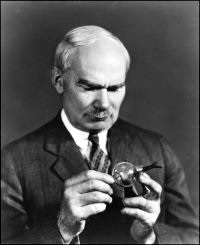 |
"ENTER THE VACUUM TUBE"
EARLY TUBE RADIOS ENABLE THE BEGINNING OF THE
ENTERTAINMENT RADIO ERA |
|
| |
|
An original DeForest spherical Audion tube designed to serve as a triode audio amplifier.
As was the case with most early tube amplifier and detectors, the gain is controlled by varying the Audion's filament voltage. The porcelain rheostat on the side of the case provides that function.
|
| |
|
With the introduction of the Audion tube, a new generation of radio receivers became possible. Work by Maj. Edwin Armstrong, brought first the "Super-regenerative" receiver and later the "Super--hetrodyne" set onto the market. Early radios were battery powered since many American homes did not have reliable electricity at the time, and reliable rectification of AC power had not reached acceptable levels. By the mid-1920s however, AC power supplies were being manufactured both as part of new set construction, and as retrofits for existing battery sets. Most radios of the day required an array of strorage batteries which provided filament voltages usually in the 2-6 volt range, and B+ or plate voltage batteries which ranged anywhere from 22 -90 Volts. |
|
| |
|
This is an example of the Cunningham AudioTron tube which was introduced shortly after DeForest began marketing his Audion valve. The AudioTron tube was introduced in 1915, by Elmer Cunningham, who later became a major player in the RCA organization. Manufactured in Oakland, CA, it consisted of an aluminum plate and a spiral grid inside a double-ended glass cylinder. The center-tapped tungsten filament allowed one half of the tube to be used until it failed, and then the second half could be placed into operation, or both could be used simultaneously for greater output. At a selling price of $7.50 in 1915, no patent was ever filed on this device, and Lee DeForest sued Cunningham for infringement. They later settled out of court, and all AudioTrons made after that posted a DeForest license number on the label. . |
| |
|
|
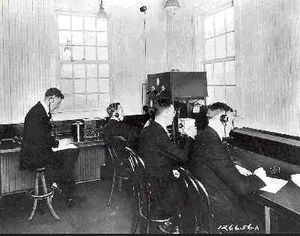 Announcer Leo Rosenberg, along with transmitter engineer William Thomas and support staff, man the first commercial radio broadcast from KDKA in Pittsburgh. The subject was election returns from the Harding-Cox presidential race. Announcer Leo Rosenberg, along with transmitter engineer William Thomas and support staff, man the first commercial radio broadcast from KDKA in Pittsburgh. The subject was election returns from the Harding-Cox presidential race. |
|
With the discovery of the Audion vacuum tube by Dr. Lee DeForest, industry leaders began to realize that spark era and crystal set radio experimentation was about to give way to the practical use of Radio as an entertainment and information device for American homes and businesses. Experiments by Dr. Frank Conrad, a researcher with Westinghouse Electric, had proven that broadcasting radio signals, containing voice and music, was practical. As Dr. Conrad prepared to begin broadcasting with an experimental station from the roof of the Westinghouse plant in Pittsburgh, Pennsylvania, the company began releasing a packaged detector-amplifier unit which was to serve as the first commercially manufactured home radio receiver. The photo above is of the museum's Westinghouse "RA-DA" detector-amplifier, acknowledged to be the first commercially manufactured radio receiver intended as an entertainment and information radio for the American home. Shortly after these sets went on the market, Dr. Conrad began regular broadcasts on what would become Radio KDKA, the nation's first commercial AM radio station. |
|
| |
MAJOR RADIO MANUFACTURERS OF THE 1920s BATTERY SET ERA |
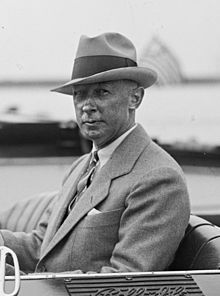 |
A. ATWATER KENT, one of the first and most prolific manufacturers of radios in the early history of radio.
|
|
|
The museum's prized Atwater Kent "Breadboard" Model 9C radio which is another early pioneer commercially made set intended for home use. Note: A manufacturer's manual for the installation of Atwater Kent breadboard radios is available.
 |
| |
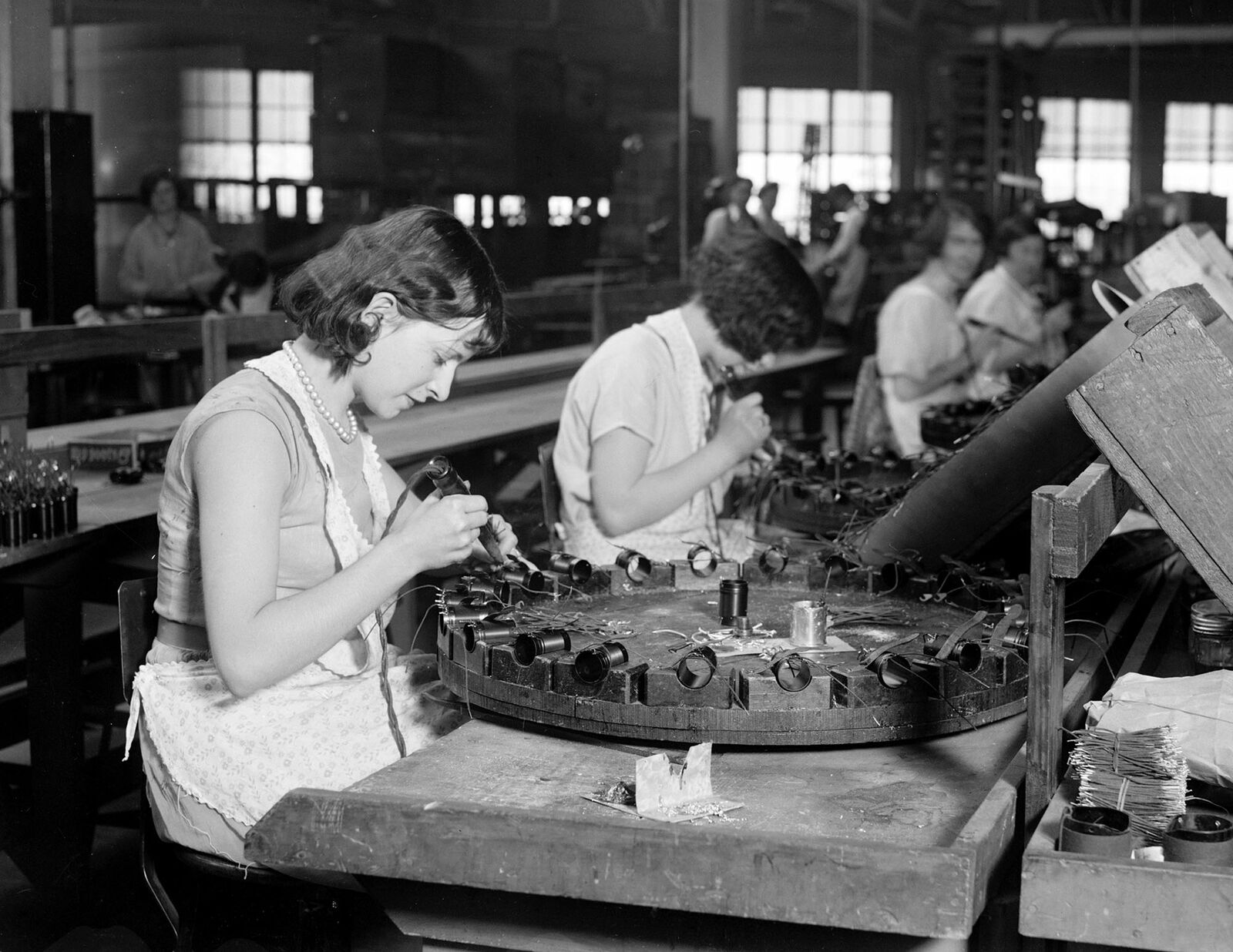 Assemblers at the Atwater Kent factory in the 1920s
Assemblers at the Atwater Kent factory in the 1920s |
|
|
An early Atwater-Kent Model 35 early battery receiver |
| |
|
A slightly later Atwater Kent set is this Model 41, which has a metal case typical of some A-K models of the late 20s and early 1930s. These sets were originally designed for battery operation, but an AC power supply, employing a Type 80 rectifier tube, was added during the model run as commercial electricity became more readily available and reliable.
There were several tube lineups used on the 40-46 series models. This particular set employs Type 12's as the TRF and detector stages, and a Type 71 for the audio output tube. |
|
Inside view of the AK-Model 41 above |
| |
|
The Atwater-Kent Model 49 receiver is one of the later battery powered sets manufactured just prior to the introduction of AC powered radios. |
| |
In the very early days of manufactured radios, the Atwater-Kent Company produced and sold a line of primitive tube radios which were constructed on wooden boards. The A-K "Breadboard" radio, as these sets were known, was later revisited in the form of a commemorative thirty-two cent stamp issued by the U.S. Postal Service in 1998. The photo directly below illustrates the design of that stamp depicting, in drawing sketch form, an A-K breadboard and Burns model 205-D horn speaker.
Although the Burns horn speaker, that appeared on the stamp, would not have typically been used with the model of Atwater-Kent radio that is depicted, our art department decided to re-stage the Post Office's stamp illustration by creating a true photo of an actual A-K Breadboard along with a Burns 205-D horn speaker from the museum's collection.
That actual staged photo (right), as compared with the illustrated stamp, is shown in the frames below.
|
|
|
| |
| |
|
Powel Crosley was originally a manufacturer of after market automobile parts. When his ten year old son became interested in radio, Crosley set out to learn more about the technology involved, with the goal of helping his son build an affordable radio of his own. In that process, he realized the potential for the sale and manufature of affordable radio equipment, which caused him to convert his assembly facilities to the manufacture of radios. The Crosley company became a leader in home radio sales, and at the height of development, the company constructed the nation's most powerful AM broadcast radio station with an experimental 500,000 watt transmitter plant in Ohio. Crosley phased out after WW-II, and the name was licensed out to various companies in the U.S. and foreign countries as well. |
|
Early Crosley Model 51 receiver |
| |
The Story of the Crosley "PUP" radio. |
|
Utilizing the invention of the vacuum tube, The Crosley "Pup" was a step up from a Crystal Set. |
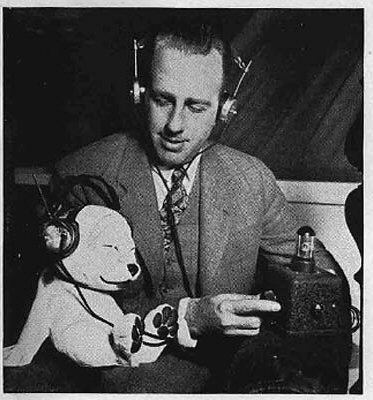 |
Left: Advertising photo of Crosley Radio Company president Powel Crosley with the Crosley Pup radio and Bonzo the dog. Bonzo was introduced along with the "Pup" receiver, and was intended to be an advertising counter measure to RCA Victor's "Nipper" the phonograph dog,
Below is a photo of the museum's recently acquired "Bonzo." Bonzo and our prized mint condition Crosley "Pup" radio are the centerpieces of the Museum of Yesterday's tribute to the Crosley Radio Corporation and the company's pioneer radio station WLW, Cincinnati.
|
|
|
| |
|
1925 Crosley Tryrdyn battery receiver
There are more Crosley radios to see in our "Depression Era" Radio page. |
| |
|
This six tube Crosley "Bandbox" Model 601 Neutrodyne receiver is a recent acquisition to the museum's communications equipment collection. It is a prime example of what would have been considered a "high-tech" receiver in the 1928 marketplace but, like all Crosley products, it was built with economy in mind so that it would find it's way into as many potential homes as possible. |
|
|
| |
| |
|
|
Front and rear view of recently acquired 1924 Day-Fan battery receiver Model OEM-7 |
|
| |
| |
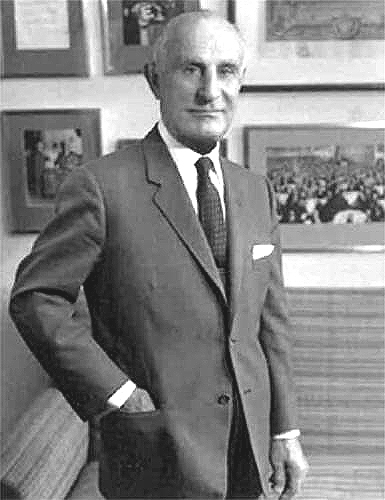 |
FADA RADIO COMPANY
AND FOUNDER
FRANK ANGELO d'ANDREA |
|
|
1925 FADA "Travler" portable radio which was recently added to the museum's early battery receiver collection.
The manufacturer's full name designation is F.A.D. Andrea Radio Company. It was started by Frank d'Andrea in New York. d'Andrea later sold F.A.D. Andrea and founded a new company in 1934 called Andrea Radio.
The "Travler 5" uses five UX-99 tubes and has a built-in wooden horn speaker. Rear view of set shown below. |
|
| |
| |
| FREED- EISEMANN |
|
Freed-Eisemann NR5 Neutrodyne receiver |
| |
| |
FRESHMAN MASTERPIECE |
|
A major 1920s competitor of Freed-Eisemann and Atwater-Kent, was Charles Freshman Co. The Freshman Masterpiece was an inexpensive ($60) radio that offered reasonably good performance for the price. The Masterpiece became the first radio for many American families. The photo below illustrates the unique air wound couplers used by Freshman. Click photo for schematic.
|
|
| |
| |
|
Alfred H. Grebe pronounced Gree-bee (1895-October 24, 1935) was a pioneer in the radio broadcasting field. He was born in Richmond Hill in the borough of Queens, in New York City. ... By age 15, he became a licensed commercial operator, and went to work as a ship's radio operator. |
|
|
|
|
The Grebe MU-1 Syncro-phase receiver was Grebe's most notable radio |
| |
THE HAMMARLUND-ROBERTS COMPANY |
|
Inventor Oscar Hammarlund founded his company in 1910, following several years as an employee of Western Electric and other companies. His original products were varied and included alarm devices for windows, call boxes to summon messengers, and a variety of household items. With a definite intrest in electronics, Hammarlund was most known for the development of the variable plate capacitor, used as the tuning device in most radios manufactured thereafter. In 1925, he established a plant in Manhattan where he began manufaturing radios under the name Hammarlund-Roberts. The set shown above is a rare example of his early 1925 sets sold under that label. Interestingly, both the model number HQ-29 and the basic appearance of the two-dial panel, seems to have set the basic design and identification system for most of Hammarlund radios which followed over the years.
The photo on the left shows the set after it was completely restored in the museum restoration facility. While there is sufficient evidence to support that the set left the original owner in good condition, it arrived at the museum with severe cabinet damage which we believe is the fault of mishandling by United Parcel Service. Fortunately, our restoration staff was able to rebuild the cabinet back to its original appearance so that this rare radio could now be placed on exhibit alongside our other Hammarlund models which include an HQ-120, 129, 140 and 170.
|
| |
COLIN B. KENNEDY COMPANY |
|
Model 440 Radio by the Colin B. Kennedy Company of St. Louis, MO |
| |
| |
KOLSTER RADIO CORPORATION |
|
|
1925 Kolster K-20 seven tube radio, manufactured by Brandes Products Corporation, shown with Atwater-Kent Model "M" speaker and Bodine loop antenna. This set was originally manufactured as a battery powered radio. When AC radios came into the market place, the manufacturer produced an AC battery eliminator on an extender chassis, that could be built into the set's existing cabinet. This set is equipped with such a device. The marble top and cherry wood table, also in the photo, is original from a Louisiana Antebellum plantation home owned by the DeMajo family ancestors.
|
| |
| |
|
|
Peter Jensen and Edwin Pridham founded the Commercial Wireless and Development Company in 1911, moved from Napa to San Francisco then Oakland in 1916. In July 1917, a merger with The Sonora Phonograph Distributor Company was finalized and the Magnavox Company was born. Frank Morgan Steers was chosen as the company's first President. Jensen moved on to the Jensen Radio Manufacturing Company (Jensen Loudspeakers), Chicago, in the late 1920s. Pridham stayed on with Magnavox, which moved manufacturing to Fort Wayne by the 1940s. Magnavox also made the first moving coil loudspeakers. |
|
|
Early Magnavox "Piedmont" model with built-in speaker and the receiver sections in a drawer. Magnavox was the inventor of the loud speaker, and this set features an early Magnavox moving coil speaker. Photo below shows the contents of the pull-out receiver drawer which is located at right. Be sure to also see our original Magnavox R3-B horn speaker shown in the speaker section below. |
|
| |
| |
PRIESS RADIO COMPANY |
|
Priess "Straight Eight"receiver fitted with iconic DeForest D-10 "ether collector" antenna.
The manufacturer coined the term "straight eight" from automotive lingo of the day, specifically the coming-of-age of the straight eight cylinder automobile engine, which alluded to power when it came to gasoline engines of that era. The radio boasted a straight line of eight tubes, with the signal being passed from tube-to-tube as it was amplified into audible sound that was sufficient to drive a large loud speaker from a relatively weak radio station. Although Priess radios were held in high esteem because of their power and sensitivity, they never really enjoyed the popularity of other brands of the day such as Atwater Kent, Crosley or Radiola. |
| |
| |
RADIO CORPORATION OF AMERICA |
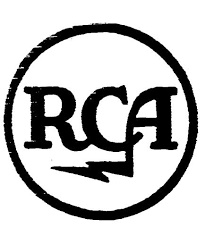 |
Radiola |
|
|
|
A classic example of early tube receiver, this Radiola III was built by RCA |
| |
|
|
RCA-Radiola AR-812, with Radiola horn speaker, was one of the first radios to employ superhetrodyne technology.
Below is a view of the interior of this radio. |
|
| |
|
RCA Radiola Model 26 portable from early 1920s. |
| |
|
By the late 1920s, several manufacturers had outfitted their previous battery chassis sets to include AC power supplies. In the case of the Radiola 51, shown above, the battery receiver chassis is situated in the top of the cabinet, while a separate AC power supply chassis was added on the lower shelf next to the speaker.. It is currently in our restoration shop and an updated photo will be added as soon as restoration is complete. A descriptive brochure is available by clicking on the photo above, and the photo below illustrates placement of the chassis and AC power supply. |
|
| |
|
Radiola 18 is one of the transition sets made at the time when several manufacturers were transitioning to the production of AC powered radios. This set's matching Radiola Model 103 tapestry speaker is shown in the speaker section below. The Radiola 18 used the same chassis as the console Model 51 above. |
| |
| |
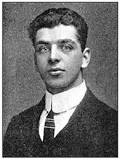 |
TUSKA RADIO
founder CLARENCE TUSKA,
co-founder of the
American Radio Relay League |
|
|
Clarence Tuska was an important inventor and proponent of radio's development in the early 20th Century. Also a pioneer in early communications, he, along with Hiram Percy Maxim, were the original founders of the American Radio Relay League. This Tuska Superdyne radio, from the early 1920s, is a prized example of early battery receivers from the museum's collection. The Tuska set is displayed above, complete with a set of Brandes headphones, which was the headphones personally recommended and sold by Mr. Tuska in his Ball and Tuska Company days. |
|
Interior view of the Tuska Superdyne Radio |
| |
| |
|
|
Western Electric audio amplifier |
| |
| |
WESTINGHOUSE ELECTRIC CORPORATION |
|
Above, a photo of three boys listening to a 1920s RCA-Westinghouse Aeriola Radio, along with a photo of the Museum of Yesterday's own Westinghouse Aeriola receiver. |
|
| |
| |
CUSTOM BUILT AND EXPERIMENTAL RADIOS |
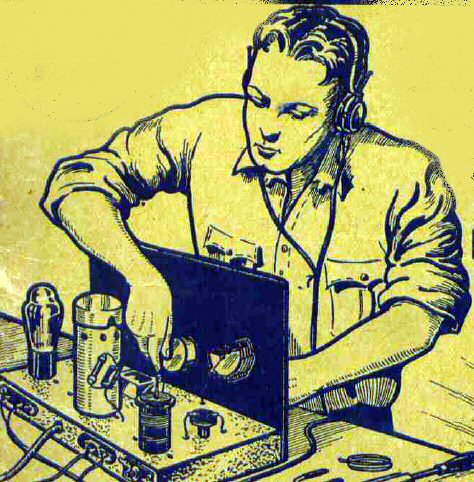 |
|
|
Experimental radio believed to have been built circa 1920 |
| |
|
A home made radio from the early experimental era. It appears to exactly match construction from an article in the text book Radio Handbook from the 1930s. |
| |
| |
RADIO BATTERIES |
|
Early radios relied on banks of batteries for both filament and high plate voltages. Typical batteries were of the lead-acid type. Above is a six cell lead acid battery from the 1920s that was typical of that era. Sulfuric acid and lead plates formed the chemical reaction that produced around two volts DC per cell. |
| |
|
|
Along with battery radios, came batteries. Above are some examples of the "wet" and "dry" cell batteries used in early radio sets. The glass battery is a lead-acid storage battery with a built-in trickle charger. It was sold along with Atwater Kent's early battery radios such as the Model 9C shown lower on this page. The "C" cell shown in the other photo, is a "bias" battery used to provide a small voltage required to balance grid current in early tube amplifiers. Many local radio dealers also offered a battery service contract where a technician would visit the set owner's home at regular intervals, to service or replace the radio batteries. |
|
| |
EARLY RADIO SPEAKERS |
|
ATWATER-KENT |
|
Atwater Kent type "M" horn speaker |
| |
|
The original model in the Atwater Kent "Model E" speaker line. |
| |
|
A later Atwater-Kent Model E-3 cone speaker from the early 1920's. |
| |
|
Another Atwater Kent speaker, this is a model F-2 |
| |
BURNS RADIO COMPANY |
|
Burns Model 205-D five panel horn speaker and driver |
| |
DICTOGRAND RADIO |
|
Early Dictogrand horn speaker |
| |
|
Dictogrand mini horn speaker |
| |
MAGNAVOX |
|
|
Magnavox R3-B horn speaker |
| |
WILLIAM MURDOCK COMPANY |
|
William J. Murdock Co. Model 500 Horn Speaker from 1923 |
|
Freeman Gosden and Charles Correll, pictured in this 1930s WMAQ - Chicago publicity photo advertising their long running "Amos 'N Andy" radio program. In the photo, "Amos" is holding a Murdock horn speaker similar to the one in the museum collection as "Andy" listens in over his shoulder. . |
| |
PEERLESS |
|
A wooden cone-type speaker from the 1920s, manufactured by Peerless C..
One has to wonder if this cabinet may have been the artistic influence for the "cathedral" radios that would emerge in the following decade. |
| |
STROMBERG-CARLSON RADIO |
|
STROMBERG CARLSON PEDESTAL SPEAKER WITH DUNCAN PHYFE DESIGN STAND |
| |
TOWER SPEAKERS |
|
A recent addition to our collection is this rare Tower "ship"motif speaker. |
| |
RADIO CORPORATION OF AMERICA - RADIOLA |
|
RADIOLA HORN SPEAKER |
| |
|
RCA R-100 Cone type speaker |
| |
|
An early Radiola Model 103 tapestry covered cone speaker designed for use with early battery sets. |
| |
|
RCA RADIOLA 100-A SPEAKER |
| |
ROLA RADIO |
|
Rola "re-Creator" horn speaker |
| |
| |
ANTENNAS AND ACCESSORIES |
|
Ornate "Loop Aerial" by the Bodine Company of Chicago, Il. |
| |
|
"The Wonder Of The Wireless" |
| |
Please continue your tour |
|
Copyright 2023, The Museum Of Yesterday |
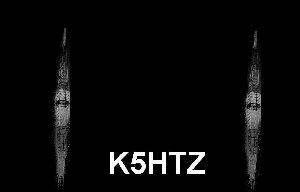



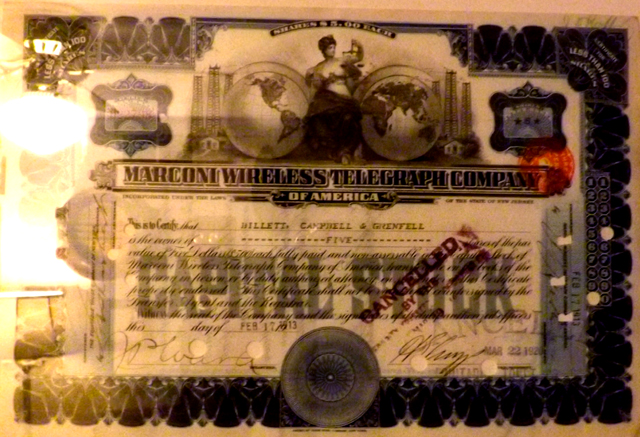
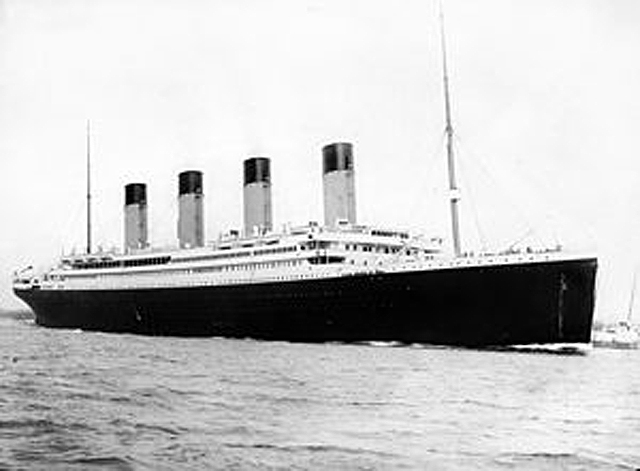
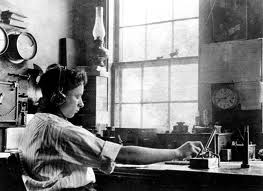
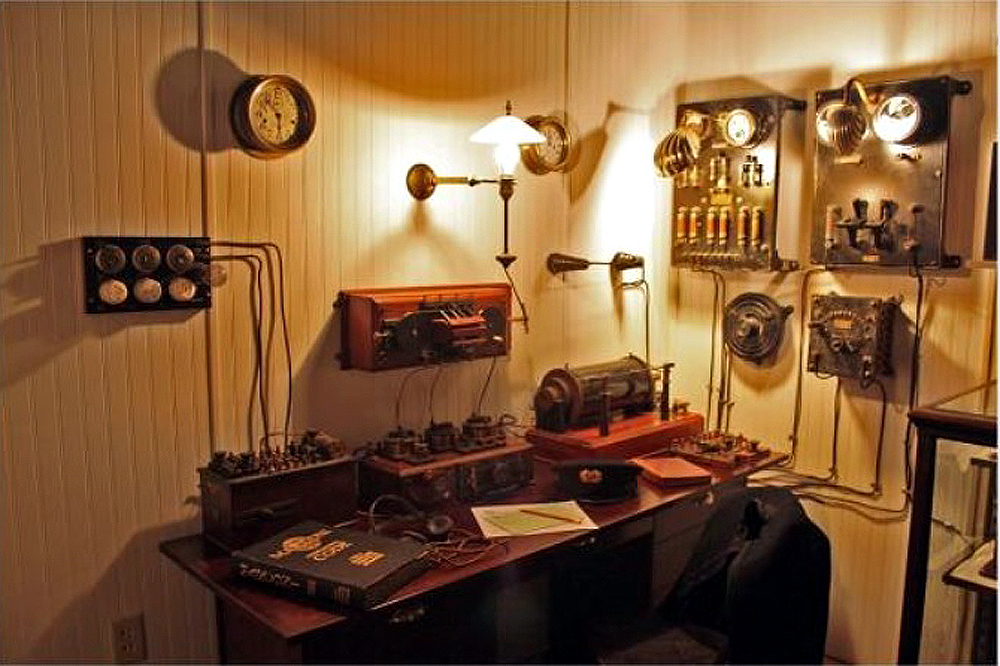
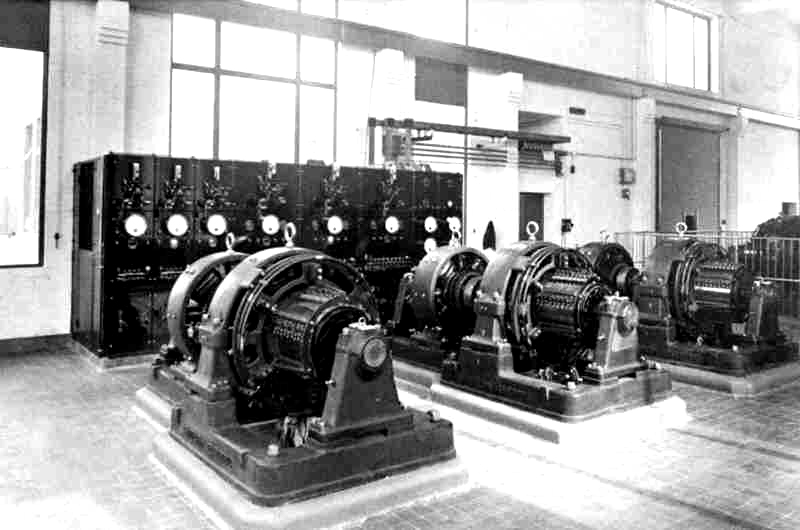

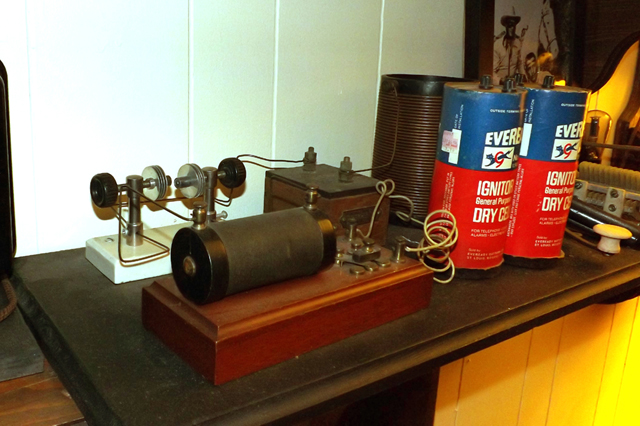
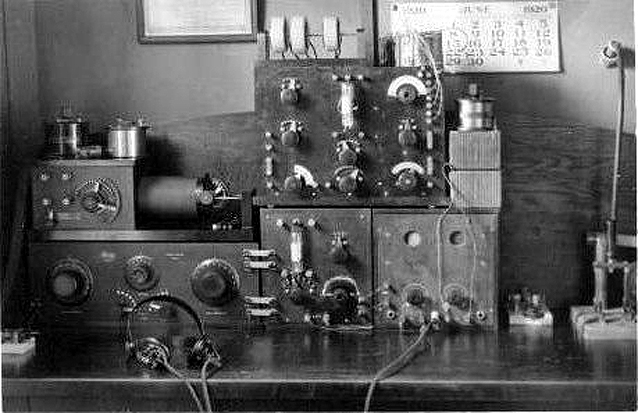
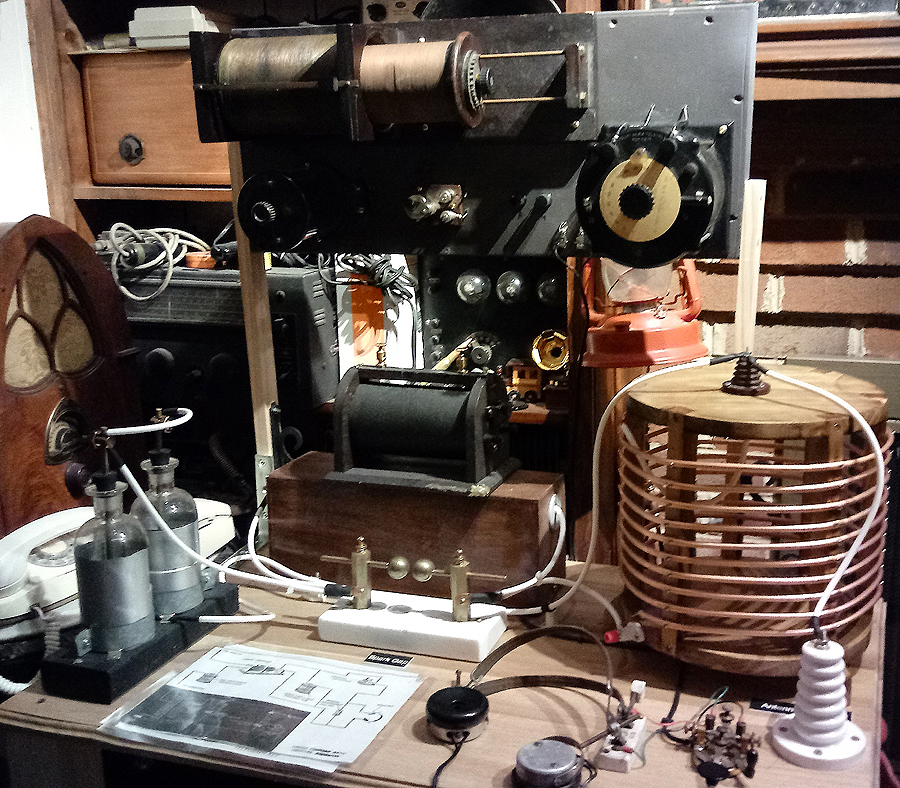
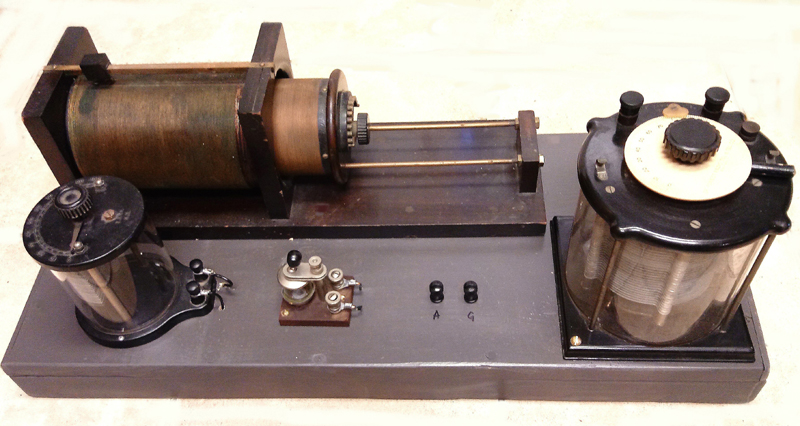
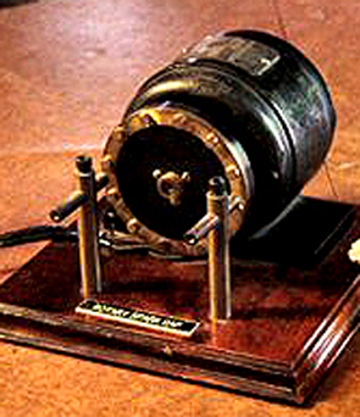
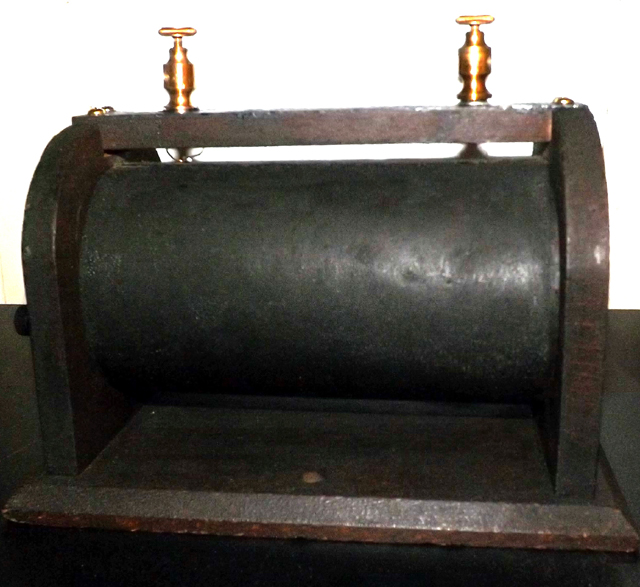
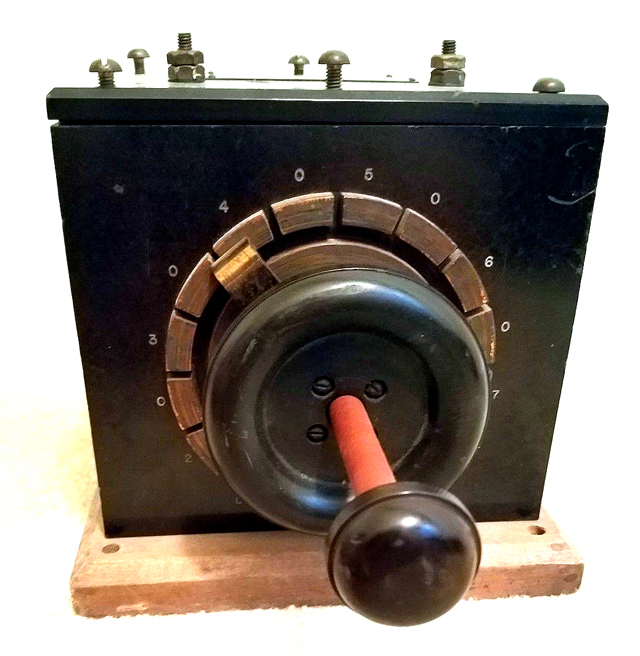
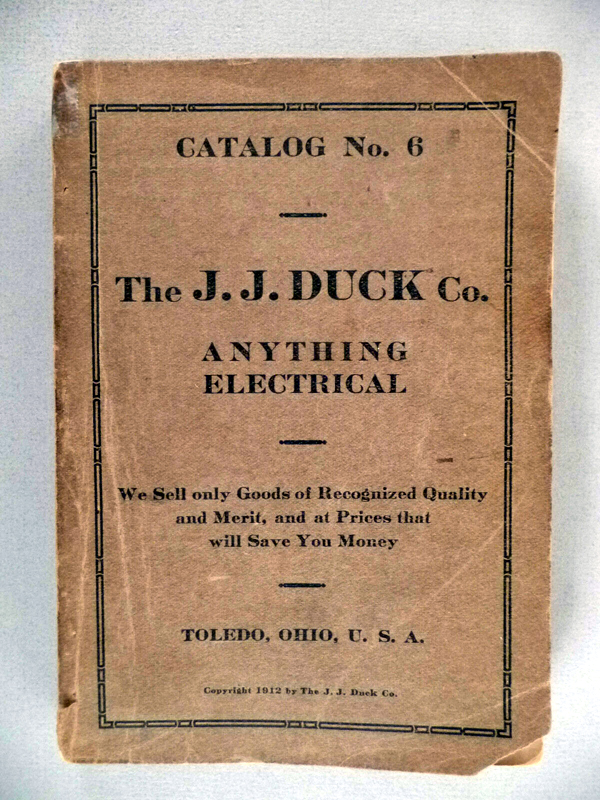
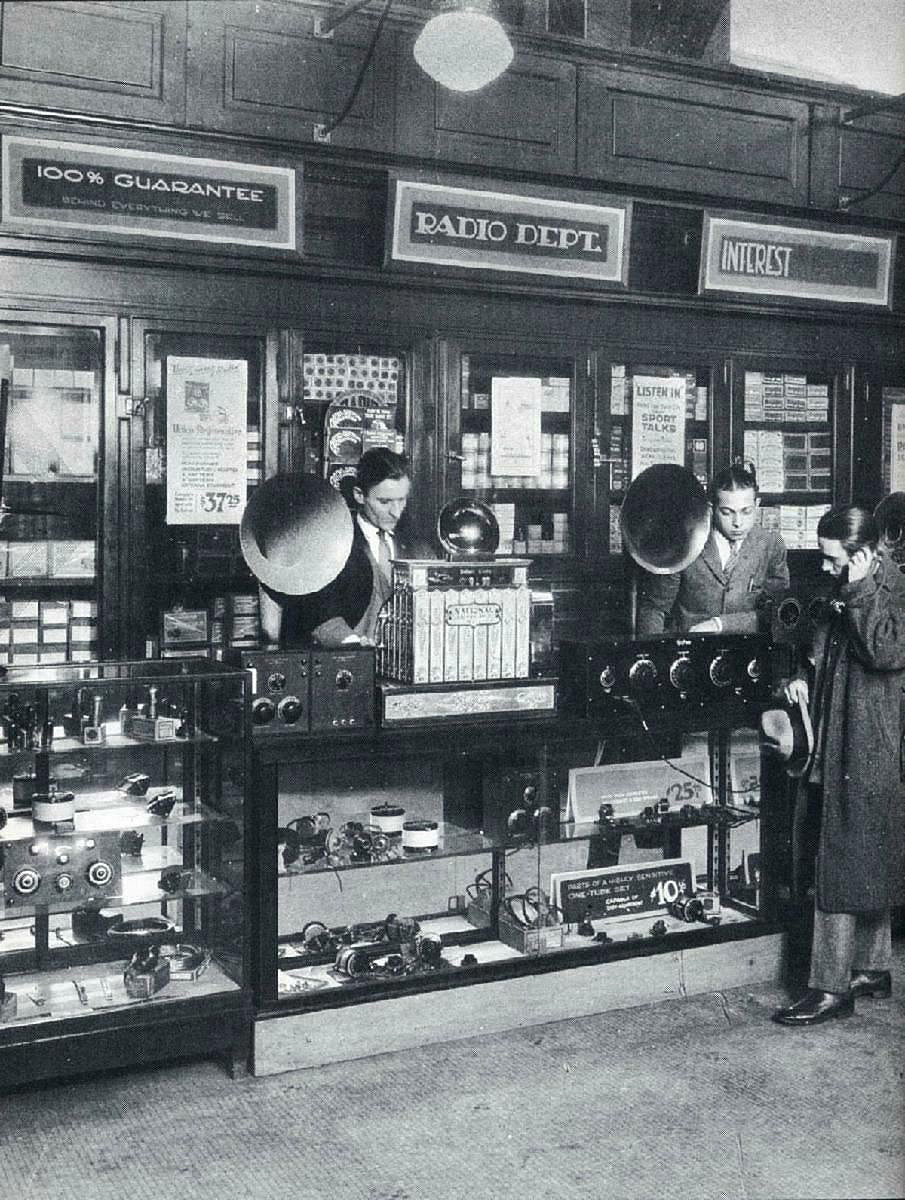
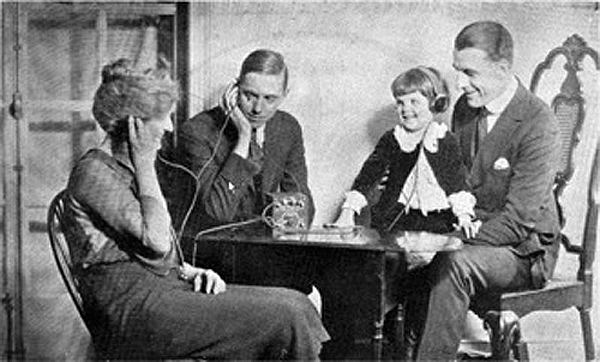

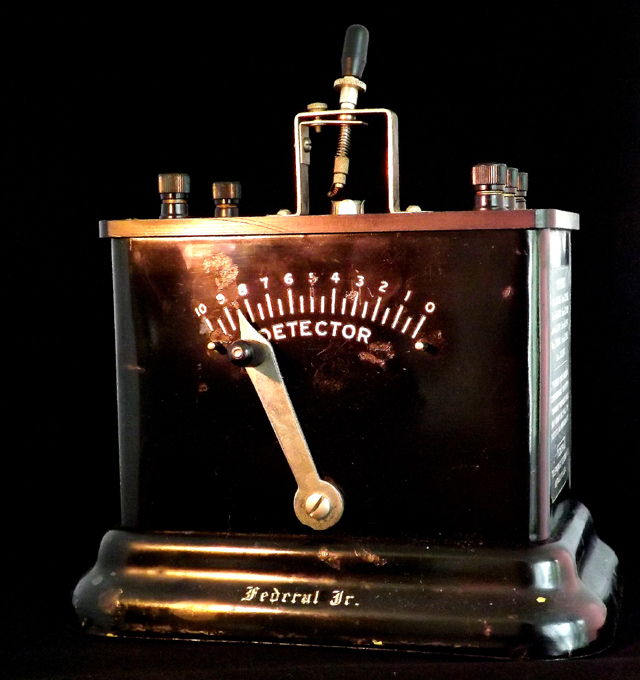
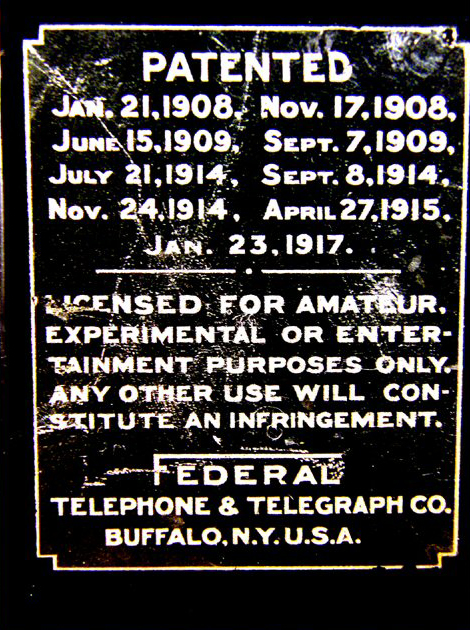
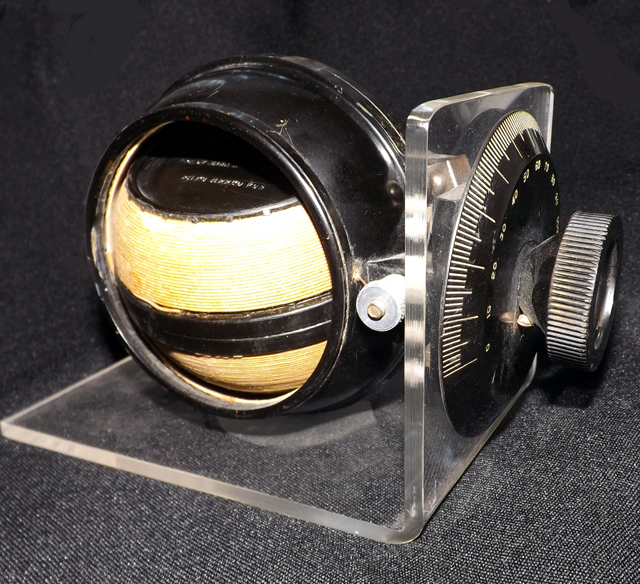
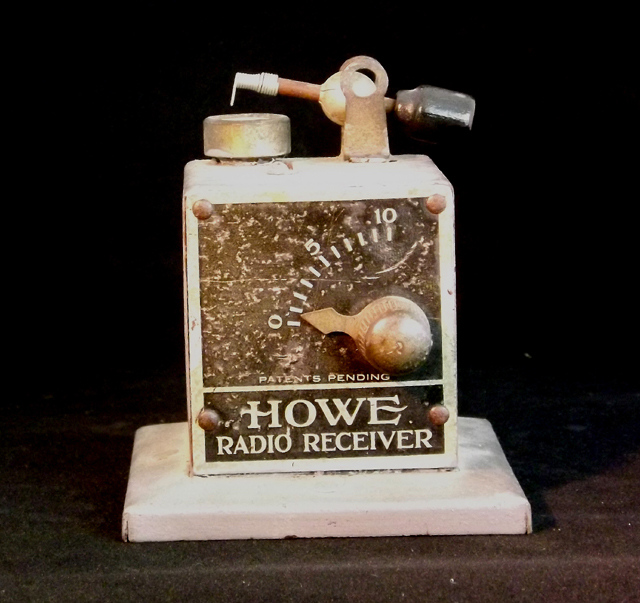
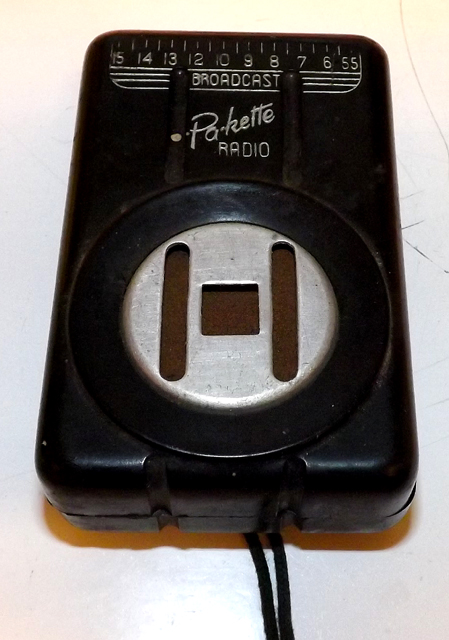
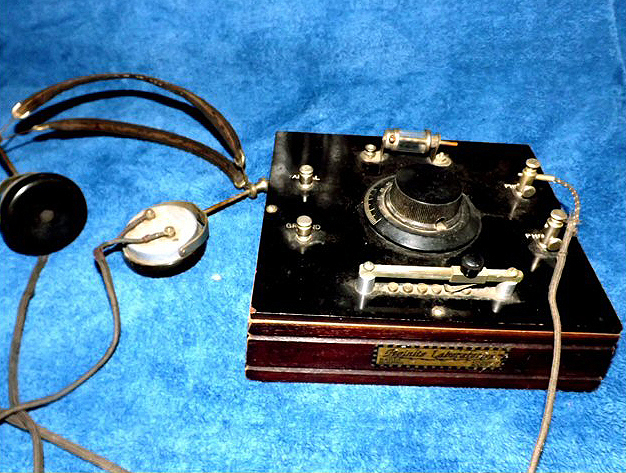
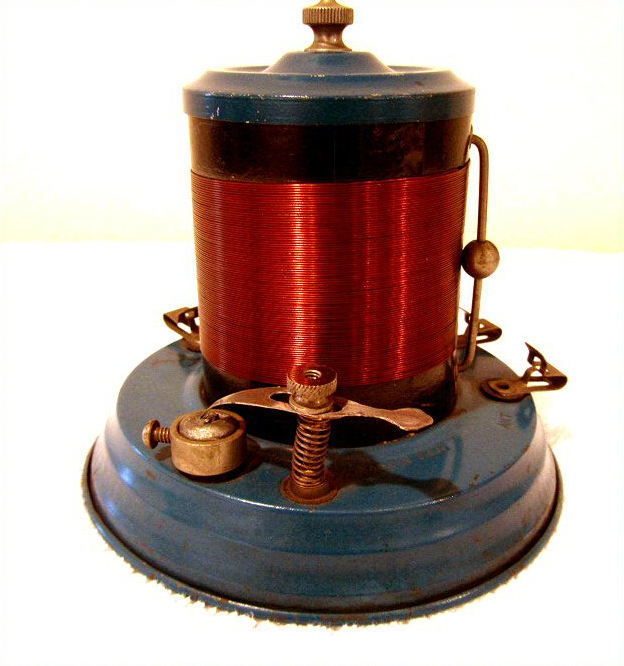
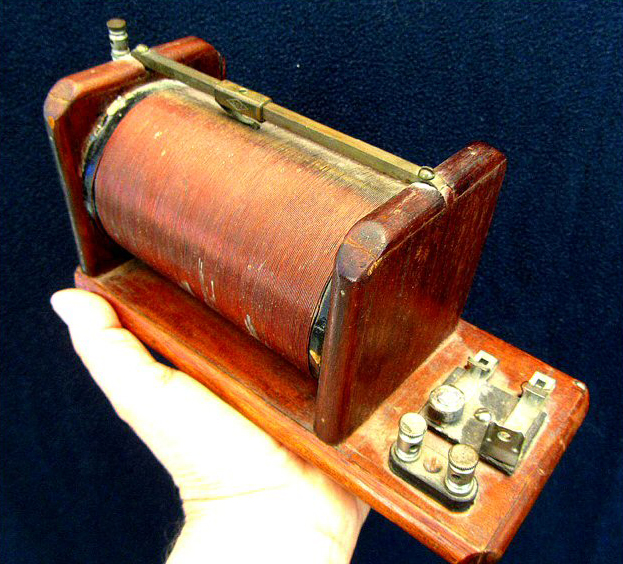
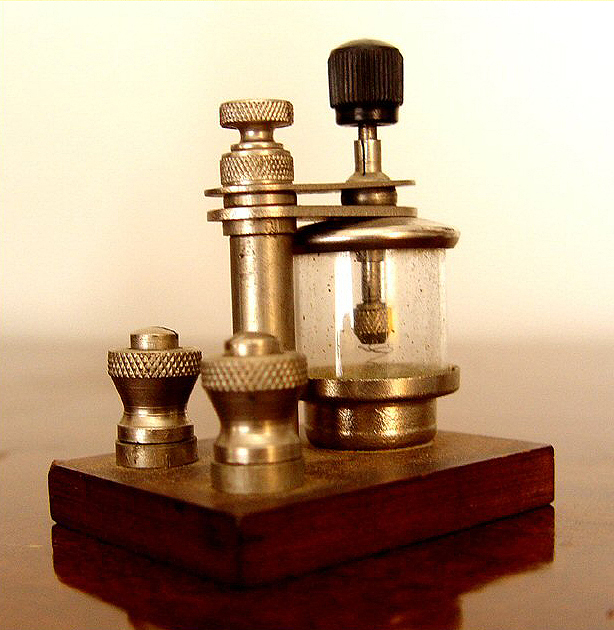

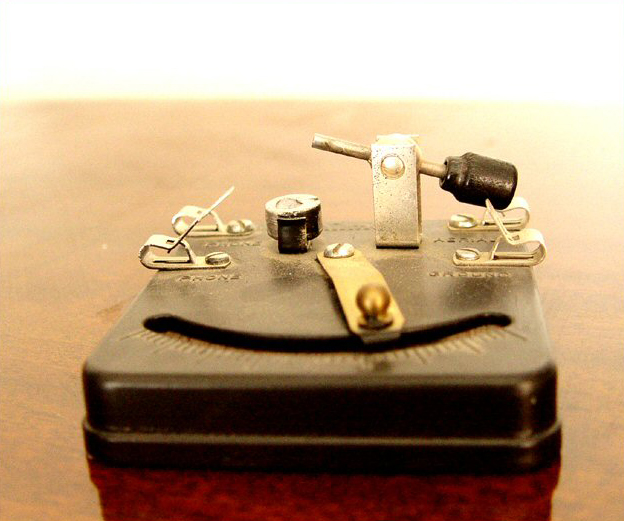
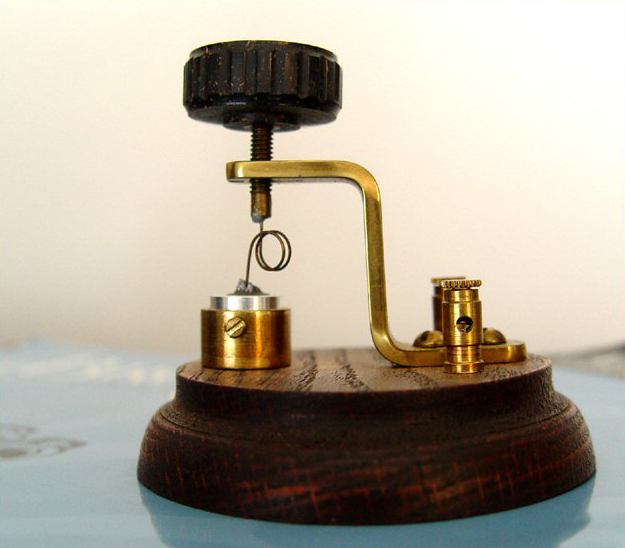
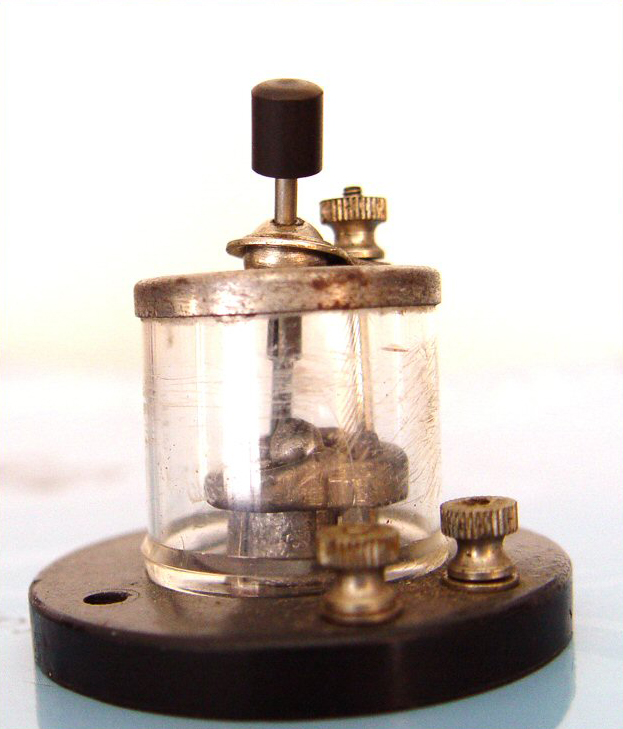
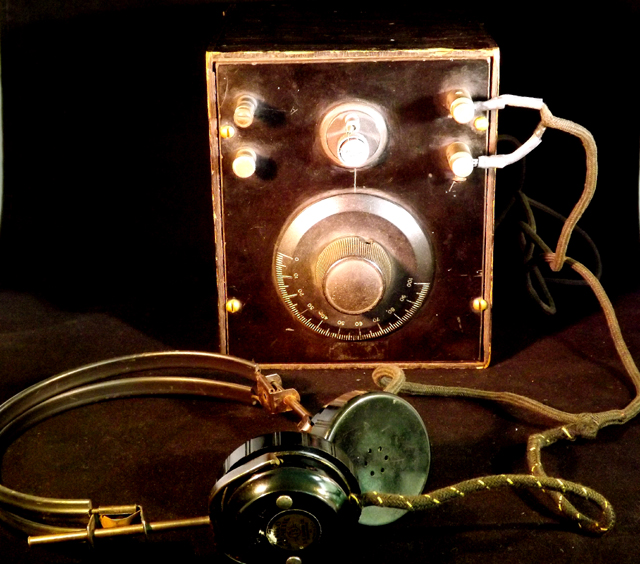
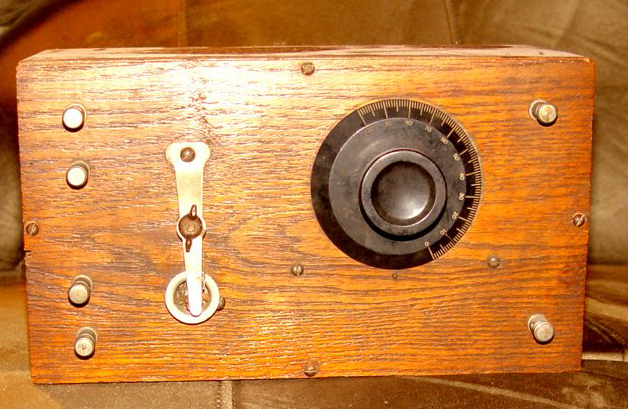
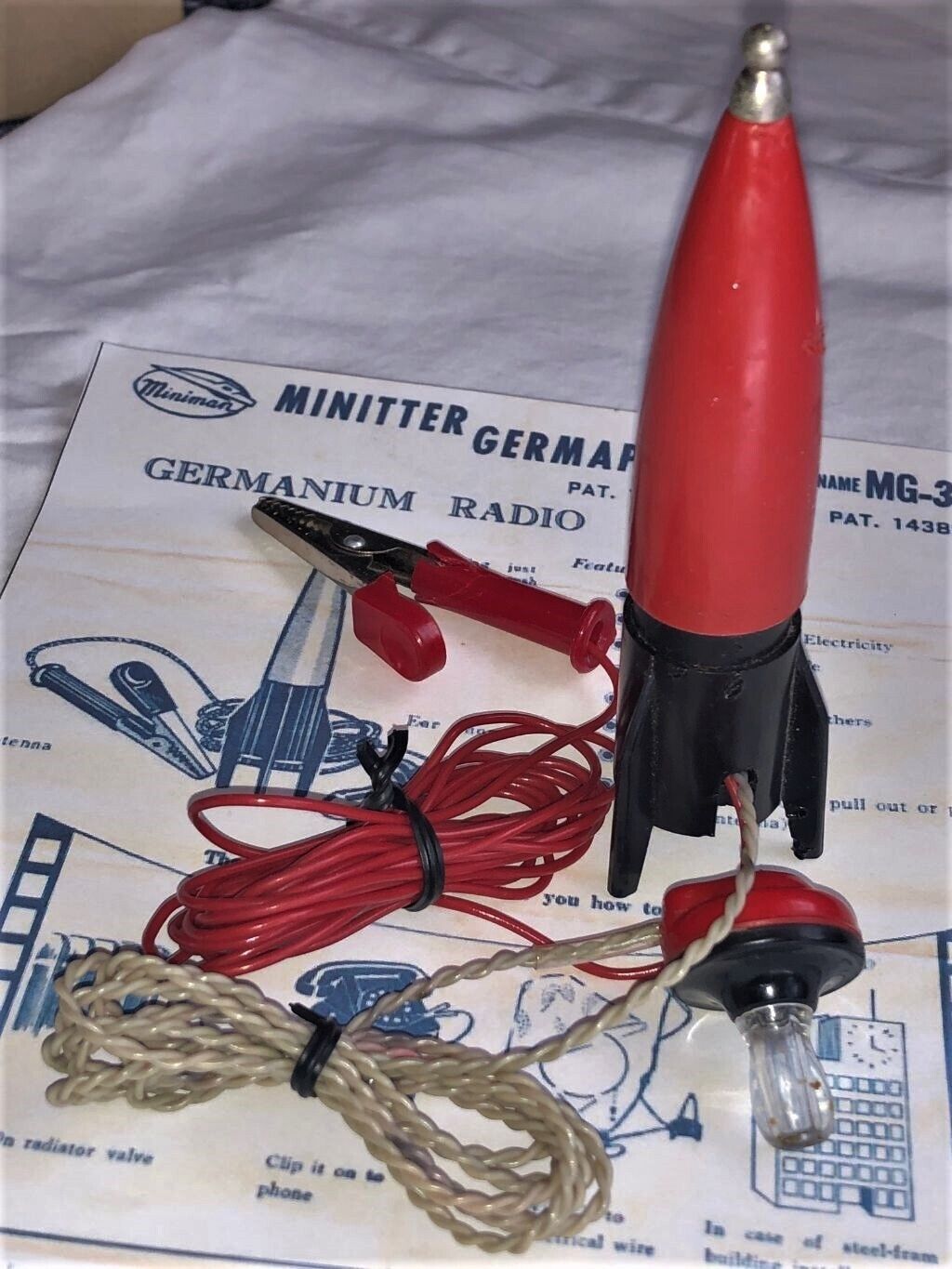
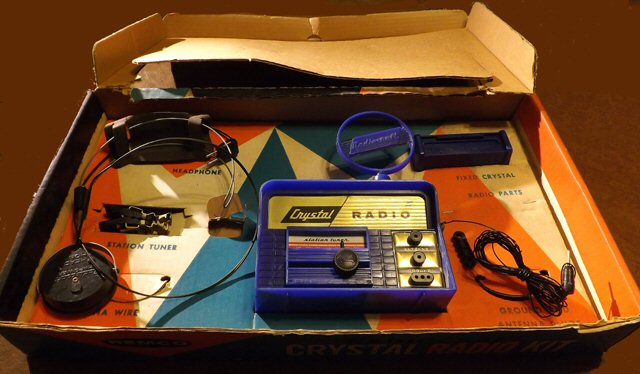
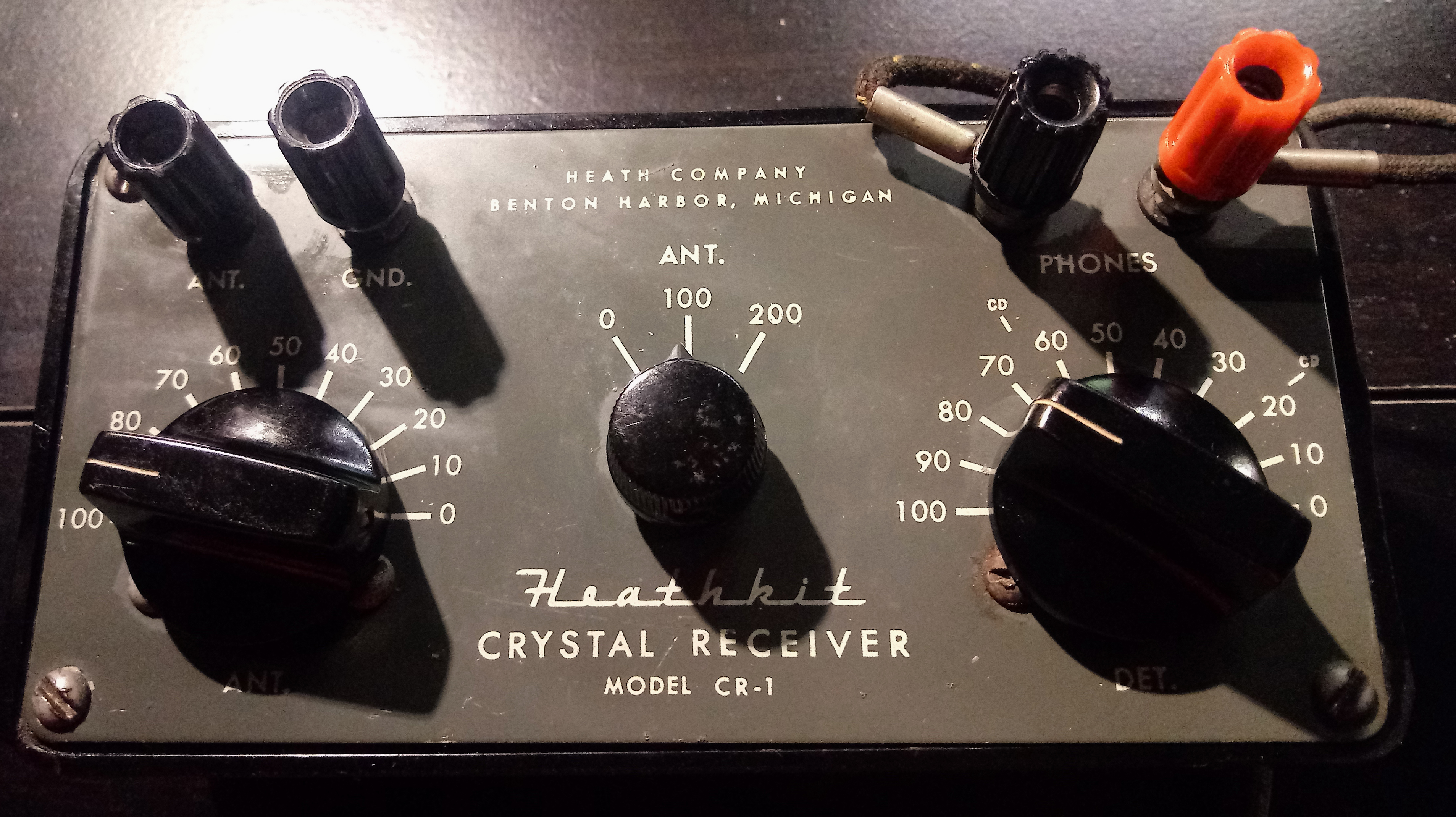

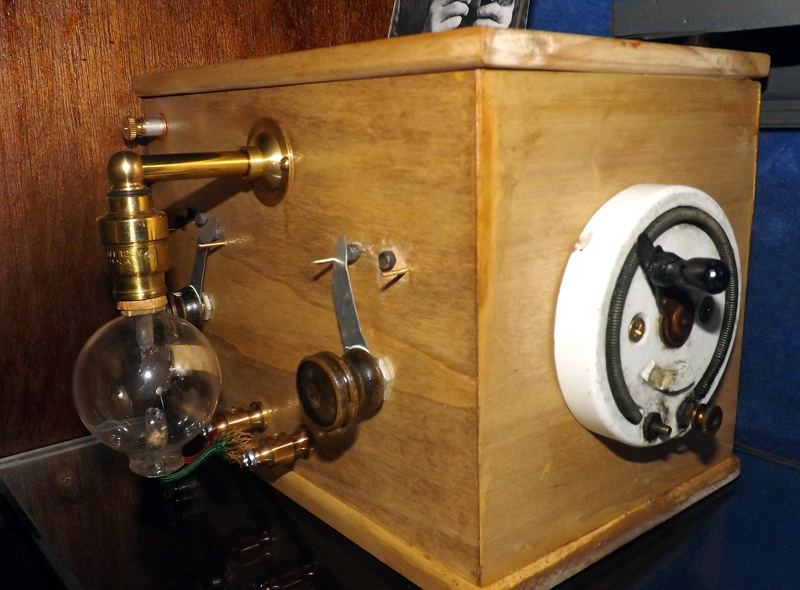

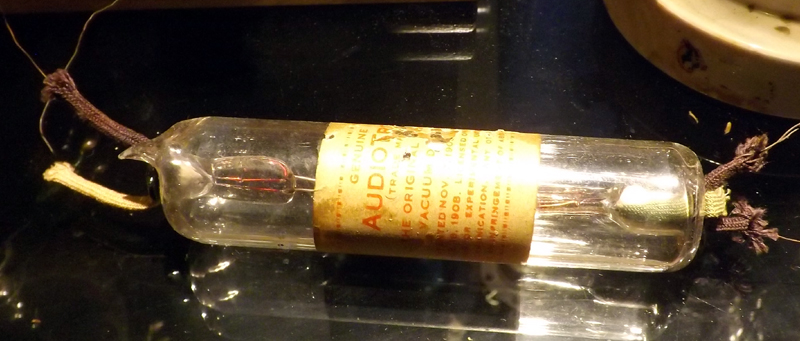
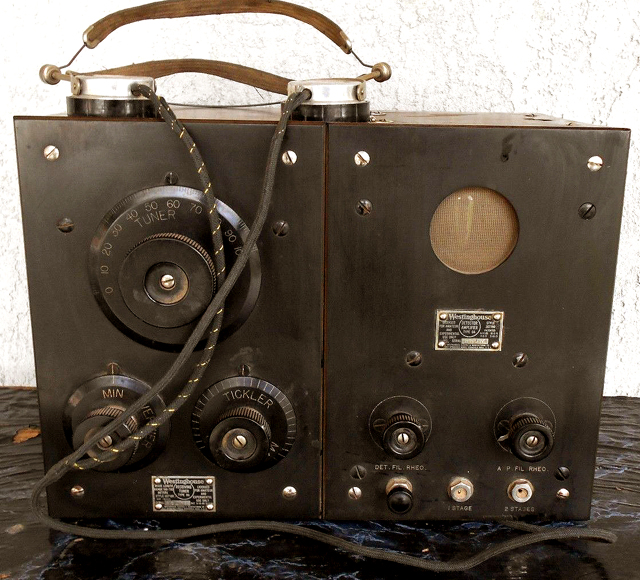
 Announcer Leo Rosenberg, along with transmitter engineer William Thomas and support staff, man the first commercial radio broadcast from KDKA in Pittsburgh. The subject was election returns from the Harding-Cox presidential race.
Announcer Leo Rosenberg, along with transmitter engineer William Thomas and support staff, man the first commercial radio broadcast from KDKA in Pittsburgh. The subject was election returns from the Harding-Cox presidential race. 
